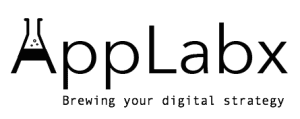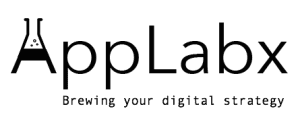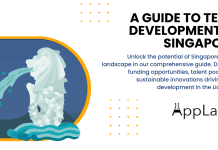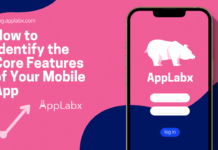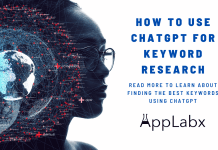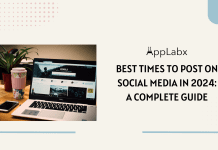Key Takeaways
- Perplexity AI is redefining search by offering real-time, cited answers through its advanced answer engine and agentic browsing tools.
- Strategic partnerships with Motorola, Samsung, and publishers are accelerating Perplexity’s market reach and user adoption.
- Despite legal and technical challenges, Perplexity’s growth, innovation, and user-centric design position it as a key AI competitor in 2025.
As artificial intelligence continues to reshape digital experiences across industries, 2025 marks a pivotal year for Perplexity AI, a rapidly emerging force in the realm of AI-driven search and information retrieval. Once perceived as a niche player, Perplexity has evolved into a formidable disruptor, challenging legacy search engines like Google and generative AI leaders such as ChatGPT, Google Gemini, and Microsoft Copilot. Through a strategic blend of cutting-edge technology, real-time search integration, enterprise-focused offerings, and aggressive partnerships, Perplexity AI is rewriting the rules of how people interact with data and extract insights in a post-search-engine world.

Perplexity’s innovative “answer engine” approach distinguishes it from traditional search models by providing direct, cited, and contextually relevant responses instead of a mere list of links. With users increasingly demanding speed, accuracy, transparency, and source verifiability, the platform has positioned itself as a superior alternative for fact-based queries, academic research, financial intelligence, and real-time news. As of mid-2025, Perplexity is estimated to handle over 780 million queries per month, with a projected goal of reaching 1 billion weekly queries by the end of the year. This explosive growth is backed by a robust business model combining a freemium user base, premium “Pro” subscriptions, and a rapidly expanding enterprise client roster.
In financial terms, Perplexity AI reached a valuation of $14 billion and is on track to exceed $100 million in annual recurring revenue (ARR), signaling strong investor confidence and the growing monetization potential of AI-native platforms. The platform’s polyglot AI architecture, which leverages multiple large language models (LLMs) including OpenAI, Anthropic, Meta’s Llama, and Google’s PaLM, enables optimal task delegation and cost-efficiency, providing users with more relevant and high-fidelity responses tailored to query complexity.
At the heart of Perplexity’s 2025 strategy lies its emphasis on real-time information retrieval, strategic integrations with device manufacturers such as Motorola and Samsung, and the upcoming launch of its Comet browser—an AI-native browser designed for autonomous agentic navigation and seamless task execution. Unlike traditional browsers that redirect users through multiple tabs and fragmented workflows, Comet aims to unify navigation, interaction, and action within a single intelligent interface, marking a potential paradigm shift in how people interact with the web.
Moreover, the company has expanded its ecosystem through revenue-sharing agreements with reputable publishers such as TIME, Der Spiegel, Fortune, and Wiley, thus addressing growing tensions around content licensing and copyright in the AI era. By aligning incentives and ensuring transparent attribution, Perplexity is building a more ethical and sustainable model for AI-enabled information retrieval—an approach that may set new industry benchmarks amid increasing legal scrutiny of AI content sourcing practices.
However, the road ahead is not without challenges. Perplexity faces growing legal disputes, data privacy concerns, and criticisms regarding limitations in app performance, moderation latency, and file-handling features. Its context window restrictions and technical inconsistencies, especially in enterprise environments, have drawn user feedback that will be crucial to address in order to maintain trust and long-term adoption.
This blog delves deep into “The State of Perplexity AI in 2025,” exploring the company’s evolution, technological strengths, ecosystem expansion, market positioning, and competitive dynamics with AI search giants. By examining both its strategic advances and the obstacles it faces, this comprehensive overview aims to uncover what makes Perplexity one of the most closely watched AI platforms of 2025—and whether its trajectory points toward becoming a core digital utility for the AI-driven future.
But, before we venture further, we like to share who we are and what we do.
About AppLabx
From developing a solid marketing plan to creating compelling content, optimizing for search engines, leveraging social media, and utilizing paid advertising, AppLabx offers a comprehensive suite of digital marketing services designed to drive growth and profitability for your business.
At AppLabx, we understand that no two businesses are alike. That’s why we take a personalized approach to every project, working closely with our clients to understand their unique needs and goals, and developing customized strategies to help them achieve success.
If you need a digital consultation, then send in an inquiry here.
The State of Perplexity AI in 2025: A Strategic and Quantitative Review
- Platform Growth and User Engagement: A Quantum Leap in Scale
- Reengineering the Foundations of Knowledge Retrieval
- Growth Trajectory and User Engagement
- Financial Health and Market Valuation
- Annual Revenue Figures and Monetization Model
- Technological Innovation and AI Model Ecosystem
- Key Features Launched or Enhanced in 2025
- API Capabilities and Enhancements in 2025
- Strategic Partnerships and Ecosystem Expansion
- Content Partnerships
- Publisher Revenue-Sharing Program
- Competitive Positioning in the AI Search Landscape
- Comparison with Google Search
- Comparison with ChatGPT
- Comparison with Google Gemini and Microsoft Copilot
- Challenges and Criticisms
- Technical Limitations and User Experience Issues
- Data Collection and Privacy Implications
- Future Outlook and Strategic Direction
- Ambitious Growth and Market Expansion
- Vision for a Trillion-Dollar Market Capitalization
- Redefining the Future of AI-Native Search
1. Platform Growth and User Engagement: A Quantum Leap in Scale
In 2025, Perplexity AI has emerged as a trailblazer in the generative AI and information retrieval domain, radically redefining how users interact with knowledge systems. With its unique positioning as an “answer engine,” the company has reached a pivotal inflection point, marked by exponential user growth, an innovative business model, and strategic differentiation in the saturated AI space.
Platform Growth and User Engagement: A Quantum Leap in Scale
Perplexity AI’s operational achievements in 2025 reflect not just growth but a seismic shift in the way digital search and discovery are approached.
User Metrics and Platform Utilization
- Monthly Queries (May 2025): 780 million processed
- Projected Weekly Queries (by Q4 2025): 1 billion
- Active Monthly Users (as of mid-2025): 22 million users
- Query Growth Trajectory (2024–2025): 2.5× YoY increase
| Metric | May 2024 | May 2025 | Growth Rate |
|---|---|---|---|
| Queries Processed | 312 million | 780 million | 150% |
| Monthly Active Users | 8 million | 22 million | 175% |
| Weekly Query Projection | – | 1 billion (goal) | – |
Engagement Innovations
- Answer Engine Model: Prioritizes verified, real-time, cited responses
- Intelligent “Spaces”: Collaborative environments for storing, organizing, and sharing AI-curated answers
- Advanced NLP Models: Handles complex user intent and conversational recall at scale
Financial Performance: Capital Confidence and Monetization Milestones
Perplexity’s financial trajectory in 2025 demonstrates strong market validation and strategic investor alignment.
Funding, Valuation, and ARR
- Latest Valuation (June 2025): $14 billion
- Projected Valuation (Q4 2025): $18 billion
- Annual Recurring Revenue (2025 est.): $100 million
- ARR Growth YoY (from 2024): 400% (from $20M)
- Total Capital Raised: $915.3 million
Strategic Backers
- Lead Investors: Jeff Bezos, Nvidia
- Other Institutional Backers: NEA, IVP, Bessemer Venture Partners
| Financial Metric | 2024 | 2025 (Projected) | YoY Growth |
|---|---|---|---|
| ARR | $20 million | $100 million | 400% |
| Valuation | $3.2 billion | $14–18 billion | 337%+ |
| Total Funding Raised | $415.3 million | $915.3 million | 120% |
Monetization Model
- Subscription-based premium plans (consumer and enterprise tiers)
- API access and integrations for enterprise-scale deployments
- OEM hardware partnerships with recurring licensing revenue
Strategic Positioning: Beyond Search, Toward Cognitive Infrastructure
Perplexity AI’s long-term vision extends beyond traditional search engine paradigms. The company is executing a multifaceted strategy to position itself as the primary layer of factual cognition in the AI stack.
Key Strategic Moves
- Hardware Integration Partnerships:
- Collaborations with Motorola, Samsung, and other OEMs for pre-installed Perplexity apps and voice assistant integration.
- AI Browser Innovation – Comet:
- A new agentic browser that autonomously summarizes, cites, and curates content in real time.
- Model Polyglot Strategy:
- Combines multiple large language models (LLMs) to ensure factual density and multi-modal adaptability.
- Citation-First Ethos:
- Every response includes cited sources, which enhances trust, verifiability, and SEO-friendliness.
| Strategic Pillar | Implementation | Impact |
|---|---|---|
| Hardware Bundling | Motorola, Samsung | Scales mobile reach |
| Browser Launch (Comet) | 2025 | Controls full discovery layer |
| Multi-Model AI | Open + proprietary | Enhances flexibility + accuracy |
| Embedded Citations | Default output style | Boosts transparency + trust |
Ongoing Challenges and Limitations: The Road Ahead
Despite monumental progress, Perplexity AI faces structural, legal, and technical headwinds that require urgent strategic navigation.
Legal Disputes and Regulatory Pressure
- BBC Content Dispute: Alleged unauthorized use of BBC content, raising issues around scraping and copyright.
- Trademark Litigation: Facing separate lawsuits regarding brand usage, potentially impacting international expansion.
Technical and Product Gaps
- Contextual Memory Constraints: Limitations in long conversation threads within large context windows.
- iOS App Performance: Stability issues persist, especially during high-traffic sessions and API overloads.
- Collaboration Friction in “Spaces”: File sharing and permission models remain under-optimized for teams.
Privacy and Data Concerns
- Third-Party Data Collection Practices: Growing scrutiny over how Comet and other tools aggregate behavioral data.
- Jurisdictional Compliance: Navigating GDPR, CPRA, and regional AI-specific laws in the EU and U.S.
| Challenge Area | Specific Issue | Risk Level |
|---|---|---|
| Legal | Content scraping and IP disputes | High |
| Technical | Context and device-level bugs | Medium |
| Privacy | Third-party tracking transparency | High |
| UX/Collaboration | Spaces limitations for enterprise use | Medium |
Outlook: A Pivotal Force in AI’s Future Trajectory
In conclusion, Perplexity AI in 2025 represents a new paradigm in knowledge interaction—one that combines structured accuracy, real-time responsiveness, and transparent citations. While its model is not without its complexities, the company’s ability to secure user trust, monetize effectively, and evolve technologically makes it one of the most consequential entities in the generative AI ecosystem today.
Key Takeaways:
- Positioned as a leading AI-native answer engine in a post-search world
- Backed by financial scale and strategic investor alignment
- Strong traction in both consumer and B2B markets
- Significant challenges lie ahead in legal, technical, and compliance domains
2. Reengineering the Foundations of Knowledge Retrieval
In 2025, Perplexity AI stands at the forefront of a paradigm shift in digital information access. Founded in August 2022 by Aravind Srinivas, Denis Yarats, Johnny Ho, and Andy Konwinski, the company has evolved from an ambitious AI startup into a pivotal player in the generative AI ecosystem. Perplexity’s declared mission—to make accurate, trustworthy, and accessible knowledge universally available—continues to resonate deeply with a rapidly growing global user base.
Company Identity and Foundational Vision
Perplexity AI presents itself not merely as a chatbot or search engine, but as a next-generation “answer engine”—a comprehensive, AI-powered knowledge interface.
Foundational Philosophy
- Self-Definition: Marketed as an “AI-powered Swiss Army Knife” and a “direct line to the world’s knowledge—compressed, cited, and made clear.”
- Core Mission (2025): To democratize access to information by providing factually sound, cited, and contextual responses through artificial intelligence.
- Target Outcome: Empower everyday users and enterprises alike with decision-ready insights—eliminating the need for interpretation-heavy search results.
Founding Team and Institutional DNA
- Founders: Aravind Srinivas (CEO), Denis Yarats, Johnny Ho, Andy Konwinski
- Founding Year: 2022
- Cultural Foundation: Combines rigorous academic AI research with agile product iteration from Silicon Valley startup playbooks
A New Information Paradigm: The Rise of the “Answer Engine”
Perplexity’s most transformative innovation lies in its hybrid approach—merging real-time information retrieval with generative synthesis, creating an entirely new product category in AI interaction.
Technological Differentiation
- Direct Answer Generation: Delivers structured, comprehensive answers instead of hyperlink lists.
- Citations and Verification: Every answer is backed by live, verifiable citations to combat misinformation.
- Live Web Indexing: Pulls real-time data from trusted online sources to provide the most current insights.
- Built-in Explainability: Transparent architecture that allows users to audit the source trail for every response.
Strategic Positioning Matrix
| Feature | Traditional Search | Chatbots (e.g., ChatGPT) | Perplexity AI |
|---|---|---|---|
| Output Type | Links | Generated responses | Cited answers |
| Real-Time Data | Limited | Often outdated | Yes |
| Citation Transparency | No | Rare | Always included |
| Trustworthiness | Medium | Variable | High |
| User Interface Style | Search bar | Chat interface | Chat + hybrid cards |
| Primary Use Case | Search navigation | Creative generation | Information retrieval |
Addressing Market Gaps: From Search Fatigue to Trust Restoration
Perplexity’s product strategy directly addresses several structural issues in the current search and AI assistant landscape.
Problems Solved
- Information Overload: Filters irrelevant data to provide the most contextually relevant summary.
- Link Reliance Fatigue: Reduces user effort by eliminating the need to manually assess multiple sources.
- AI Hallucinations: Mitigates misinformation risks common in LLMs by leveraging a citation-first methodology.
- Speed and Efficiency: Delivers real-time synthesis of accurate data, supporting productivity and learning workflows.
Ideal Use Cases
- Academic research and citation-heavy writing
- Business intelligence and fast decision-making
- Technical troubleshooting with traceable solutions
- Current events, legal insights, and medical Q&A with source transparency
User Adoption and Platform Growth: A Surge in Global Reach
Since its launch, Perplexity AI’s user base and engagement metrics have expanded at a meteoric pace, reflecting the platform’s alignment with shifting digital consumption behaviors.
Growth Trajectory (2022–2025)
- Initial Usage (2022): ~3,000 queries per day
- Daily Query Volume (2025): 30 million+ queries
- Growth Rate: ~10,000× increase in under three years
- Platform Stickiness: Driven by high return usage and low bounce rates due to accuracy and UX simplicity
Adoption Growth Chart
Query Volume Growth (2022–2025)
┌────────────┬────────────────────┐
│ Year │ Daily Query Volume │
├────────────┼────────────────────┤
│ 2022 (Q3) │ 3,000 │
│ 2023 (Q4) │ 1.5 million │
│ 2024 (Q4) │ 12 million │
│ 2025 (Q2) │ 30 million+ │
└────────────┴────────────────────┘
Future Implications: Rewriting the Digital Knowledge Infrastructure
Perplexity’s rise indicates not only a growing demand for AI that is credible and transparent, but also a shift in digital user psychology—where trust and accuracy are non-negotiable.
Long-Term Strategic Implications
- Information as a Service (IaaS): Perplexity is carving out a new layer in the digital infrastructure stack—beyond search, beyond chat.
- Enterprise Integration Potential: Emerging enterprise solutions hint at future CRM, legal research, and compliance tools built atop the Perplexity model.
- Regulatory Readiness: By foregrounding citation and data verifiability, Perplexity is ahead of many peers in potential regulatory environments focused on AI transparency.
Competitive Advantage Summary
| Differentiator | Value Contribution |
|---|---|
| Real-Time Citations | Enhances user trust and compliance |
| UX Simplicity | Reduces learning curve |
| Multi-Model Hybrid Engine | Increases factual accuracy |
| Strategic Data Retrieval | Enables dynamic responses |
3. Growth Trajectory and User Engagement
In 2025, Perplexity AI is witnessing an unprecedented acceleration in both platform growth and user engagement, reinforcing its positioning as a frontrunner in the emerging AI-native information retrieval market. Through a combination of rapid innovation, user-centric design, and a disruptive “answer engine” model, the platform is fundamentally redefining user expectations in the search domain.
Query Volume and Market Expansion: Scaling Beyond Traditional Search Models
The exponential rise in query volume handled by Perplexity AI throughout 2025 is a clear indicator of its soaring market relevance and product-market fit.
Monthly and Daily Query Surge
- May 2025: 780 million monthly queries
- June 2025: 1.4 billion monthly queries — an 80% increase in one month
- Daily Average Queries (2025): ~30 million
- Annual Projections (2025): Over 3 billion queries expected by year-end
Query Growth Momentum
- Consistent Month-over-Month Growth: 20% average query volume increase
- Stated Goal by CEO Aravind Srinivas: Achieve 1 billion weekly queries by Q4 2025
Table: Perplexity AI – Query Volume and Growth Metrics
| Metric | Value | Date |
|---|---|---|
| Monthly Queries (May) | 780 million | May 2025 |
| Monthly Queries (June) | 1.4 billion | June 2025 |
| Daily Average Queries | 30 million | 2025 |
| Projected Annual Queries | 3+ billion | 2025 |
| MoM Query Growth Rate | 20% | 2025 Average |
| Weekly Query Target | 1 billion | Q4 2025 Goal |
Expanding User Base: Mass Adoption Across Platforms
Perplexity AI’s user acquisition efforts have shown high efficiency, particularly across mobile and browser-integrated interfaces, supporting both broad-scale adoption and intensive individual engagement.
User Base Growth Highlights
- Active Users (May 2025): 22 million (reported), with some sources indicating 15 million
- Chrome Extension Installs (2025): 2.5 million+ — a 5× increase YoY
- Mobile App Installs (Mid-2025): Surpassed 50 million
- Monthly Active Mobile Users (MAUs): 42 million — a 74% increase from 2024
Platform Penetration Strategy
- Cross-Platform Ecosystem: Seamless integration across mobile, web, browser extensions
- Hardware Partnerships: Pre-installations on Android devices driving rapid mobile expansion
Table: Platform Adoption Overview
| Platform | Metric | Value | Period |
|---|---|---|---|
| Chrome Extension Users | Total Installs | 2.5 million+ | 2025 |
| Mobile App | Total Installs | 50 million+ | Mid-2025 |
| Mobile App | Monthly Active Users | 42 million | Mid-2025 |
| All Platforms | Active Users | 22 million | May 2025 |
Engagement Depth and Behavioral Analytics: A Loyal and Active User Base
Beyond mere usage, Perplexity AI exhibits a high level of user engagement, with metrics far exceeding industry benchmarks for generative AI platforms and traditional search engines.
Usage Metrics and Retention Indicators
- Daily Active Users (DAU): 16.2 million in June 2025
- Monthly Active Users (MAU): 70 million across platforms
- DAU/MAU Ratio: 53% — significantly above average, reflecting habitual daily usage
Session Behavior Metrics
- Average Session Duration (June 2025): 13 minutes, 7 seconds
- Pages per Visit: 4.38
- Queries per Session:
- Mobile: 5.1
- Desktop: 6.4
- Bounce Rate:
- Overall Web: 43.78%
- Mobile App: 7.5% — indicating strong stickiness
- Context Retention Rate: 84%
- Queries with Follow-ups: 47% — essential for long-form, research-intensive use cases
Table: Engagement and Behavior Metrics
| Metric | Value | Date |
|---|---|---|
| DAU | 16.2 million | June 2025 |
| MAU | 70 million | 2025 |
| DAU/MAU Ratio | 53% | 2025 |
| Avg. Session Duration | 13:07 minutes | June 2025 |
| Pages per Visit | 4.38 | June 2025 |
| Queries per Session (Mobile) | 5.1 | 2025 |
| Queries per Session (Desktop) | 6.4 | 2025 |
| Bounce Rate (Web) | 43.78% | June 2025 |
| Bounce Rate (Mobile App) | 7.5% | 2025 |
| Context Retention Rate | 84% | 2025 |
| Follow-up Query Rate | 47% | 2025 |
Strategic Insight: From Product Utility to Ecosystem Dominance
The momentum behind Perplexity AI is not simply a result of superior technology—it signals a deeper transformation in how digital audiences interact with information systems.
Key Strategic Implications
- Behavioral Shift: The preference for cited, direct answers over traditional link listings suggests rising skepticism toward legacy search platforms.
- Platform Stickiness: The high DAU/MAU ratio demonstrates that once users adopt Perplexity, they integrate it into their daily routines.
- Mobile vs Desktop Dynamics:
- Desktop (82.51% of site traffic): Used for deeper, research-oriented workflows
- Mobile (42 million MAUs): Serves fast, casual, frequent interactions with lower friction
Table: Platform Purpose Matrix
| Platform | Primary Use Case | Bounce Rate | Avg. Queries per Session |
|---|---|---|---|
| Desktop | In-depth research, multi-step Q&A | 43.78% | 6.4 |
| Mobile App | Quick answers, daily productivity | 7.5% | 5.1 |
| Chrome Extension | Passive utility, context support | N/A | Variable |
Conclusion: Redefining the AI Search Economy
The 2025 trajectory of Perplexity AI marks a tipping point in the evolution of human-information interaction. No longer constrained by the traditional logic of hyperlink navigation, users are embracing real-time, context-aware, citation-backed answers that provide clarity, speed, and trust. This is not simply Perplexity’s moment—it is a redefinition of what it means to “search.”
As Perplexity’s ecosystem deepens across mobile, browser, and enterprise environments, and as engagement metrics continue to rise, the platform is positioned to become a central layer in the future digital knowledge infrastructure.
4. Financial Health and Market Valuation
In 2025, Perplexity AI is no longer viewed merely as a promising AI startup—it has firmly established itself as a capital-intensive, investor-backed juggernaut poised to challenge entrenched players in the information retrieval industry. Through a succession of increasingly substantial funding rounds and strategic investor alliances, the company has fortified both its valuation and its long-term ability to innovate at scale.
Funding Evolution and Investment Timeline: A Steady Surge in Capital Confidence
Perplexity AI’s funding trajectory reveals an increasingly aggressive growth strategy, underpinned by high investor conviction in its market-disrupting capabilities. Each successive round has not only provided capital but significantly boosted the company’s valuation, reflecting its rising influence and perceived market dominance.
Key Investment Milestones
- Seed Round (Sep 2022): $3.1 million – foundational capital to validate MVP
- Series A (Mar 2023): $25.6 million – valuation: ~$150 million
- Series B (Jan 2024): $73.6 million – valuation: ~$520 million
- Series C1 (Apr 2024): $63 million – valuation crosses $1 billion mark
- Series C2 (Aug 2024): $250 million – signals institutional scaling
- Series C3 (Dec 2024): $500 million – valuation surges to $9 billion
- Series D (Jun 2025): $500 million – valuation confirmed at $14 billion
- Projected Series D+ (H2 2025): Ongoing negotiations hint at an $18 billion future valuation
Table: Perplexity AI – Funding Rounds and Valuation Growth
| Funding Round | Amount Raised | Valuation at Time | Date |
|---|---|---|---|
| Seed | $3.1 million | Undisclosed | Sep 2022 |
| Series A | $25.6 million | ~$150 million | Mar 2023 |
| Series B | $73.6 million | ~$520 million | Jan 2024 |
| Series C1 | $63 million | >$1 billion | Apr 2024 |
| Series C2 | $250 million | Undisclosed | Aug 2024 |
| Series C3 | $500 million | $9 billion | Dec 2024 |
| Series D | $500 million | $14 billion | Jun 2025 |
| Projected D+ | Up to $1 billion | ~$18 billion | H2 2025 (est.) |
Strategic Investor Composition: A Syndicate of Industry Titans
Perplexity AI’s funding rounds have not merely attracted capital—they’ve brought on board some of the most influential figures and firms in the tech and AI ecosystems. This alignment of high-profile backers signals strong strategic alignment and market validation.
Notable Institutional and Individual Investors
- Tech Entrepreneurs:
- Jeff Bezos (Amazon founder)
- Tobias Lütke (Shopify CEO)
- Nat Friedman (former GitHub CEO)
- Technology Companies:
- Nvidia
- Databricks
- Venture Capital Firms:
- Accel
- IVP (Institutional Venture Partners)
- NEA (New Enterprise Associates)
- SoftBank Vision Fund
Investor Matrix: Type vs Strategic Advantage
| Investor Type | Example Names | Strategic Contribution |
|---|---|---|
| Tech Founders | Bezos, Lütke, Friedman | Vision, credibility, media leverage |
| Infrastructure AI | Nvidia, Databricks | Compute resources, AI tooling |
| Growth Capital VC | Accel, IVP, NEA | Enterprise scaling, go-to-market strategy |
| Global Megafunds | SoftBank Vision Fund | Large-scale capital, global expansion |
Valuation Dynamics: From Niche Disruptor to Market Challenger
Perplexity’s valuation has skyrocketed from $150 million in early 2023 to $14 billion by mid-2025, with projections suggesting it may exceed $18 billion by year-end. This 90x+ growth trajectory over two years reflects investor belief in both Perplexity’s monetization capabilities and its potential to fundamentally restructure the global search market.
Chart: Valuation Growth Over Time (2022–2025)
plaintextCopyEditValuation ($B)
18 ┤ ┌───────────── Future (Projected)
16 ┤ │
14 ┤ ┌──────┘
12 ┤ │
9 ┤ ┌──────┘
6 ┤ │
3 ┤ ┌──────┘
0 ┼───────┴───────────────────────────────
2022 2023 2024 2025
Revenue Validation and Business Model Strength: A Monetization-Ready AI Ecosystem
Perplexity’s valuation rise is not driven by hype alone—it is underpinned by credible financial performance and scalable business models.
Revenue and Monetization Signals
- Projected 2025 Revenue (ARR): ~$100 million
- Revenue Growth (YoY): ~400% (from $20 million in 2024)
- Key Revenue Streams:
- Subscription tiers (consumer and enterprise)
- Premium “Pro” features and team plans
- API access and B2B integrations
- Hardware integration licensing with OEMs
Business Model Matrix
| Revenue Source | Description | Scalability Potential |
|---|---|---|
| Subscriptions | Individual and enterprise plans | High |
| API Usage & Developer Tools | Pay-per-query developer access | High |
| OEM Licensing | Embedded software in partner hardware | Medium-High |
| Enterprise SaaS Integrations | Data-rich collaboration features | Medium |
Strategic Implications: Capital as a Competitive Moat
The sheer volume of capital raised empowers Perplexity to act aggressively in a crowded market, particularly against entrenched players such as Google, OpenAI, and Anthropic.
Competitive Leverage from Capital
- Product Innovation: Accelerated development of proprietary technologies like the Comet browser and multi-modal search systems.
- Talent Acquisition: Ability to outbid incumbents for top-tier AI researchers, engineers, and product leaders.
- Global Expansion: Funding supports localization, compliance, and infrastructure in key regions (EU, Asia-Pacific, LATAM).
- Defensive Buffer: Financial reserves act as a hedge against legal challenges, platform costs, and regulatory pressures.
Conclusion: A Financial Engine Behind the Future of AI Search
As of mid-2025, Perplexity AI is not merely a product success—it is a capitalized platform poised for market transformation. Its trajectory from early-stage startup to multibillion-dollar disruptor has been accelerated by strategic investments, visionary founders, and a clearly defined roadmap. The intersection of high user engagement, differentiated technology, and massive financial backing places Perplexity in a commanding position to not only survive but to reshape the future of information access.
5. Annual Revenue Figures and Monetization Model
As of 2025, Perplexity AI has rapidly transitioned from a high-growth startup into a revenue-generating enterprise, underpinned by a maturing monetization strategy and explosive year-over-year financial growth. By combining robust subscription models with emerging advertising streams and a first-of-its-kind publisher revenue-sharing framework, Perplexity has crafted a hybrid monetization architecture built for both scalability and sustainability.
Revenue Acceleration: A Compound Growth Story
Perplexity AI’s topline financial performance reveals a staggering expansion in annual recurring revenue (ARR), signaling strong product-market alignment and willingness to pay among its user base.
Key Revenue Milestones
- 2023 Revenue: $1 million ARR
- 2024 Revenue: $20 million ARR – 20× growth YoY
- 2025 Revenue (Projected): $100 million ARR – 400% YoY growth
This steep growth curve, paired with user expansion and high engagement, reflects not only a monetizable user base but also increasing enterprise adoption and success in upselling premium features.
Chart: Perplexity AI Annual Revenue Growth (2023–2025)
Annual Revenue ($M)
120 ┤
100 ┤ ╭─── 2025 (Projected)
80 ┤
60 ┤
40 ┤ ╭─────
20 ┤ ╭─────── 2024
0 ┼─────────┴─────────────┴────────
2023 2024 2025
Monetization Structure: Subscription Core + Advertising Expansion
Rather than relying on a single source of income, Perplexity AI employs a hybrid monetization model, which balances predictable recurring revenue with scalable ad-based income—strategically designed to appeal to both individuals and enterprise customers.
Subscription Plans
- Perplexity Pro — $20/month:
- Access to priority response generation
- Expanded context windows and saved sessions
- Self-Serve Plan — $40/month per seat:
- Designed for SMEs, freelancers, and power users
- Includes collaboration tools and usage analytics
- Perplexity Max — $200/month:
- Tailored for enterprise-level workflows
- Offers API credits, model customization, and team management
Emerging Revenue Channels
- Advertising (2024 Launch):
- Strategically introduced to supplement subscriptions
- Expected to open large-scale monetization without user lock-in
- Publisher Revenue Sharing Program:
- Announced: July 2024
- Expanded: December 2024
- Model: Shares double-digit % of ad revenue with content originators on a per-source basis
- Purpose: Incentivizes publishers and mitigates copyright disputes
Monetization Matrix: Plan Types vs. Revenue Potential
| Monetization Channel | Target Segment | Price Point | Revenue Predictability | Scalability | Strategic Purpose |
|---|---|---|---|---|---|
| Perplexity Pro | Individuals | $20/month | High | Medium | Baseline recurring revenue |
| Self-Serve Plan | SMBs / Professionals | $40/month/seat | High | High | Multi-user growth |
| Perplexity Max | Enterprises | $200/month | Very High | Medium | B2B adoption, deep use cases |
| Advertising | Public Users / Brands | Variable CPM | Medium | Very High | Mass monetization, ad partnerships |
| Publisher Rev-Share Program | Content Ecosystem | % Revenue Share | Low–Medium | Long-Term | Compliance, ecosystem equity |
Strategic Rationale Behind Dual Revenue Streams
Perplexity’s decision to combine subscription monetization with advertising and rev-share diversification reflects a high-level strategic understanding of platform dynamics, stakeholder alignment, and growth scalability.
Subscription-Driven Advantages
- Predictable Cash Flow: ARR provides financial consistency to support hiring and infrastructure.
- Tiered Upselling Path: Clear upgrade funnels based on user sophistication and needs.
- Reduced Platform Risk: Less dependence on ad-based volatility, unlike traditional search engines.
Advertising & Rev-Share Benefits
- Greater Market Reach: Non-subscribers can still be monetized via contextual advertising.
- Content Ecosystem Stability: Sharing revenue with publishers helps secure high-quality indexed content.
- Legal Risk Mitigation: Addresses potential copyright and scraping disputes preemptively.
Table: Perplexity AI Financial and Strategic Overview (2023–2025)
| Year | Revenue (USD) | Valuation (USD) | Funding Round | Capital Raised | Key Investors |
|---|---|---|---|---|---|
| 2023 | $1 Million | $150 Million (Mar) | Series A | $25.6 Million | NEA, Nat Friedman, Elad Gil, Susan Wojcicki |
| 2024 | $20 Million | $520M (Jan) | Series B | $73.6 Million | IVP, NVIDIA, Jeff Bezos |
| $1B+ (Apr) | Series C1 | $63 Million | Daniel Gross, Bezos, NVIDIA | ||
| Not Disclosed (Aug) | Series C2 | $250 Million | SoftBank, NVIDIA | ||
| $9B (Dec) | Series C3 | $500 Million | SoftBank Vision Fund, NVIDIA, Jeff Bezos | ||
| 2025 | $100 Million | $14B (June) | Series D | $500 Million | Accel, Samsung (in talks), SoftBank |
| (Projected) | $18B (Projected) | Series D+ | $500M–$1B (Est) | TBD |
Final Insight: Financial Resilience as a Strategic Weapon
In an industry where many AI ventures burn capital with little return, Perplexity AI’s financial discipline and monetization versatility have become key differentiators. The dual-stream revenue model not only future-proofs its business but also supports ethical innovation through fair publisher compensation and user-centric subscriptions.
This robust financial foundation empowers Perplexity to continue scaling aggressively across mobile, enterprise, and embedded hardware environments—while remaining resilient against economic headwinds, competitive pricing wars, and regulatory scrutiny. In doing so, the company cements itself not only as an innovation leader but as a financially sustainable disruptor in the evolving AI search economy.
6. Technological Innovation and AI Model Ecosystem
In 2025, Perplexity AI has evolved into a technologically agile and strategically diversified AI platform, characterized by its robust multi-model architecture, proprietary innovations, and dynamic query handling system. Its underlying technological philosophy centers around the convergence of real-time information retrieval, conversational AI, and model interoperability, creating a powerful alternative to legacy search paradigms.
Core Functionality and Real-Time Knowledge Extraction
Perplexity AI distinguishes itself from traditional search engines by operating as an interactive answer engine, synthesizing data from the web in real-time and delivering conversational responses grounded in citation-backed evidence.
Foundational Technological Capabilities
- Real-Time Web Crawling: Dynamically scans the live web to retrieve fresh and relevant content.
- Conversational Layer: Interprets complex natural language queries through advanced Natural Language Processing (NLP) pipelines.
- Contextual Memory: Utilizes long context windows and turn-level memory to manage multi-step queries.
- Citations Framework: Each response is footnoted with links to authoritative sources, improving transparency and trust.
- Semantic Compression: Uses ML to generate high-accuracy summaries optimized for clarity and precision.
This system delivers synthesized, real-time answers rather than a list of links—reshaping how information is consumed and acted upon by users.
Model Polyglot Strategy: Multi-Model Intelligence as Competitive Armor
At the heart of Perplexity’s innovation stack lies its model polyglot strategy, a paradigm that aggregates and integrates multiple foundational models from third-party providers and its own internal research labs.
Integrated AI Models (Third-Party + Proprietary)
| Provider | Models Included | Purpose & Application |
|---|---|---|
| OpenAI | GPT-4, GPT-4 Turbo, GPT-4o, o1, o3-mini, o4-mini | General purpose reasoning, structured conversation |
| Anthropic | Claude 3 Opus, Sonnet, Haiku, Claude 3.5, 4.0 | Multi-step logic, low hallucination rates |
| Google DeepMind | Gemini 2.5 Pro, Gemini | Speed-oriented QA, multilingual capabilities |
| Meta | LLaMA family (various versions) | Open-source transparency, lightweight models |
| xAI (Elon Musk) | Grok 3 Beta, Grok 4.0 | Ideological diversity, community-leaning perspectives |
| Perplexity AI | Sonar, Sonar Pro, R1-1776 | Tuned for real-time QA with citation accuracy |
Performance Benchmark: Sonar vs Sonar Pro
Perplexity’s in-house research team has produced Sonar and its successor Sonar Pro, both designed to optimize real-time QA retrieval and factual correctness.
Table: Proprietary Model Benchmark Scores (SimpleQA Dataset)
| Model | F1 Score | Use Case Focus |
|---|---|---|
| Sonar | 0.773 | General factual answering |
| Sonar Pro | 0.858 | Enhanced precision & recall |
| R1-1776 | N/A | Early-stage research model |
These proprietary models help Perplexity fine-tune responses for specific tasks, reducing reliance on external providers and aligning product output with its brand identity.
Architecture Advantages: Flexibility, Cost Optimization, and Operational Resilience
Perplexity’s model-agnostic architecture offers unparalleled advantages in cost control, system uptime, and performance adaptability.
Strategic Benefits of Model Polyglotism
- Compute Cost Optimization:
- Queries routed to the most cost-effective models based on workload
- Dynamic scaling across model tiers to reduce per-query pricing
- Outage Resilience:
- Failover systems enable seamless switching between providers
- Enhances uptime and query fulfillment under third-party outages
- Performance-Based Model Routing:
- Some models perform better at summarization, others at reasoning
- System intelligently routes based on task-type and latency profiles
- Negotiation Leverage:
- Having multiple providers reduces vendor lock-in
- Greater bargaining power in model pricing and licensing agreements
Decision Matrix: Choosing the Right Model per Query Type
| Task Type | Preferred Model Route | Optimization Priority |
|---|---|---|
| Fast, simple retrieval | Gemini 2.5 / LLaMA | Latency & low cost |
| Deep reasoning QA | GPT-4o / Claude Opus | Accuracy & multi-hop reasoning |
| Factual citation tasks | Sonar Pro / Claude 3.5 | Truthfulness & reference use |
| Real-time context updates | R1-1776 / Sonar | Recency and low hallucination |
Strategic Implications: Model Interoperability as a Scalable Moat
Perplexity’s model interoperability does not merely reflect technical convenience—it serves as a strategic moat in the AI ecosystem. Unlike single-model platforms such as ChatGPT (OpenAI) or Gemini (Google), Perplexity’s flexible architecture allows it to evolve faster, serve niche use cases, and negotiate more favorable compute contracts.
Broader Impact of Model-Agnostic Architecture
- User Personalization: Future personalization could allow users to select preferred model profiles.
- Sovereign AI Opportunities: Model polyglotism supports compliance with regional AI governance frameworks.
- Developer Platform Expansion: APIs could expose model-switching tools for devs building vertical-specific apps.
Conclusion: A Distributed, Intelligent Infrastructure Designed for Scale
In 2025, Perplexity AI’s technological leadership is anchored in more than just performance—it reflects a future-oriented infrastructure that blends agility, scalability, and resilience. By integrating the strengths of the most advanced AI models while innovating its own, Perplexity has built a system designed not just to compete, but to redefine the information economy.
The model polyglot framework will likely become the default standard for enterprise-grade AI tools moving forward. Perplexity’s early embrace of this architecture signals a lasting advantage in performance optimization, cost control, and global adaptability.
7. Key Features Launched or Enhanced in 2025
In 2025, Perplexity AI made transformative strides by evolving from a real-time answer engine into a multi-agent platform equipped with autonomous task execution, context-sensitive intelligence, and cross-platform utility. A series of significant product launches and enhancements reflect the company’s intent to compete not just in AI search—but across AI-native personal assistant, browser, and productivity tool categories.
These innovations are not incremental; they collectively represent a bold reimagination of digital interaction, pushing Perplexity toward becoming a fully-integrated, context-aware operating layer for the modern web.
AI Assistant Expansion: Perplexity Assistant
Release Timeline: January 2025 (core), April 2025 (full mobile integration)
Core Capabilities
- Multimodal Input Processing:
- Leverages device camera to understand real-world surroundings and on-screen content
- Cross-App Task Execution:
- Performs actions across apps (e.g., ride-hailing, music search, navigation)
- Persistent Context Awareness:
- Maintains user task continuity across app boundaries
- Language Support: Initially launched in 15 languages
- Platform Availability: Fully integrated into both Android and iOS
Strategic Significance
- Enhances mobile-first AI adoption
- Enables frictionless utility beyond static search
- Supports a vision of ambient intelligence across daily life
Current Limitation: Still in beta—limited reliability acknowledged by Perplexity itself
Agentic Interface: Comet Browser
Beta Launch: May–June 2025 (Apple Silicon), Windows support announced
Key Functional Features
- Embedded AI Side Panel:
- Offers Perplexity-powered in-browser search, summarization, and citations
- Autonomous Workflow Execution:
- Comet Assistant automates web tasks (e.g., reservations, tab management)
- Privacy-First Design:
- Ad-blocking and tracker prevention built-in
- Context-Aware Responses:
- Adjusts answers based on browsing history, session behavior, and user preferences
Strategic Impact
- Transcends search by introducing AI-driven task execution
- Positions Perplexity as a potential disruptor to Google Chrome and Safari
- Reinforces a new paradigm of “vibe browsing”—adaptive and automated web experiences
Risk Consideration
- Increased AI agency raises questions about trust, data access, and ethical automation
Productivity and Research Stack
| Feature | Description | Strategic User Segment | Launch Timeline |
|---|---|---|---|
| Pages | Converts AI-generated content into shareable research web pages or reports | Students, Professionals | Ongoing (2025) |
| Spaces | Collaborative hubs with file upload, notes, and topic organization | Research teams, Enterprises | Upgraded in 2025 |
| Internal Knowledge Search | Unified search across web and internal docs (PDF, Excel, etc.) | Enterprise Pro Users | October 2024 (core), refined in 2025 |
| File Limit (Enterprise) | 500 files for simultaneous indexing/search | Enterprise Pro | Applies to internal search |
Functional Depth
- Enables real-time cross-referencing of public web data with private files
- Promotes collaborative workflows within “Spaces”
- Improves document management and insight generation for knowledge-based teams
Vertical-Specific Feature Rollouts
| Sector | Feature Suite | Partner/Source | Launch Status |
|---|---|---|---|
| Finance | Real-time stock data, industry comparisons, trend tracking | Financial Modeling Prep (FMP) | October 2024 (enhanced in 2025) |
| E-Commerce | One-click product cards in search results | Amazon, NVIDIA | November 2024 (scaled in 2025) |
| User Rewards | “Pro Perks” subscription-based discount bundle | Visa, GoodRX, TurboTax, Avis | May 2025 |
Key Takeaways
- Financial features integrate basic analytics + real-time intelligence
- Shopping Hub bridges search and e-commerce with frictionless transactions
- Pro Perks adds economic value to premium plans, encouraging paid adoption
Feature Integration Matrix
| Feature | Category | Platform Support | Intelligence Level | Monetization Role |
|---|---|---|---|---|
| Perplexity Assistant | Task Automation | Android, iOS | Multi-modal, Agentic | User Retention & Upsell |
| Comet Browser | Autonomous Browsing | macOS (beta), Windows | Context-Aware | Product Ecosystem Anchor |
| Internal Search | Enterprise Utility | Web | Document-Aware NLP | B2B Monetization |
| Pages & Spaces | Productivity Tools | Web, Mobile | Structured Output | Feature Depth |
| Finance Suite | Data Intelligence | Web, App | Real-time Querying | Niche Expansion |
| Shopping Hub | E-commerce Layer | Web, App | Commercial Intent | Ad & Affiliate Revenue |
| Pro Perks | Subscription Bonus | Web, App | Loyalty Mechanism | Churn Reduction |
Conclusion: From Answer Engine to Action Engine
The wave of features introduced in 2025 confirms that Perplexity AI is no longer just a passive information platform. It is actively redefining the AI-agent experience, transitioning toward a full-stack cognitive interface that enables discovery, action, and collaboration—at scale and across modalities.
By combining agentic capabilities (Comet, Assistant) with structured research tools (Pages, Spaces) and domain-specific enhancements (Finance, Shopping), Perplexity is laying the groundwork for an AI-native productivity ecosystem that has few direct analogs in today’s market.
8. API Capabilities and Enhancements in 2025
In 2025, Perplexity AI has significantly evolved its API infrastructure, positioning itself as a high-performance, enterprise-ready platform for developers, researchers, and enterprise users. These updates underscore a strategic shift—from an AI answer engine to an expansive, programmable research and automation layer capable of powering next-generation applications across academia, software development, and enterprise analytics.
Expanded Developer Functionality and Controls
Academic Filter (Released: June 2025)
- Purpose: Filters responses to prioritize peer-reviewed scholarly content and academic journals.
- Use Case: Enables evidence-backed insights for scientific research, legal discovery, and academic publishing.
- Implementation: Boolean switch in API payload for academic mode.
Strategic Value: Enhances credibility and aligns Perplexity with specialized research databases like JSTOR or Google Scholar.
Reasoning Effort Parameter (Released: May 2025)
- Feature Functionality: Controls the computational depth and token usage of queries using effort levels:
low,medium, orhigh. - Use Case: Allows developers to balance speed vs. thoroughness for cost-efficiency in heavy query applications.
- Application: Primarily used with Sonar Deep Research API endpoints.
| Effort Level | Token Usage | Response Time | Best Use Case |
|---|---|---|---|
| Low | Minimal | Fast | Basic retrieval or preliminary drafts |
| Medium | Moderate | Balanced | General-purpose knowledge synthesis |
| High | Extensive | Slower | In-depth analysis and reasoning tasks |
Strategic Benefit: Empowers developers with granular control over latency, cost, and depth of AI response.
Asynchronous API for Research (Released: May 2025)
- Description: Enables submission of long-running or complex queries and fetches results later via tokenized task IDs.
- Ideal For: Legal audits, technical whitepapers, and multi-source synthesis tasks.
- Supported Models: Sonar Deep Research suite.
Impact: Greatly enhances parallel processing workflows and computational efficiency in resource-intensive use cases.
Multimodal and Query Refinement Capabilities
Image Upload Functionality
- Function: Accepts image-based inputs for visual search and context extraction.
- Use Case Examples: Diagnosing product defects, interpreting graphs, location-based visual inputs.
- Integration: Available via
/multimodal/searchendpoint.
Strategic Insight: Moves Perplexity deeper into multimodal AI territory, competing with tools like Google Lens and GPT-4o’s image inputs.
Date Range Filtering
- Function: Restricts query results to a defined time interval, improving recency-based precision.
- Use Case: Regulatory tracking, trend analysis, news monitoring.
Output Structuring and API Infrastructure Enhancements
Structured JSON Output
- Implementation: API responses now return results in well-formed JSON structures for better programmatic handling.
- Advantage: Ensures consistency, reduces parsing errors, and improves integration with BI dashboards, data pipelines, and automation flows.
Increased Rate Limits
- New Default Rate: 50 requests per minute (RPM)
- Impact: Enables smoother batch processing, bulk querying, and higher throughput for enterprise users.
Default Inclusion of Citations
- Update: API responses now automatically include citation metadata.
- Value: Elevates information transparency, vital for compliance-heavy industries like legal, medical, and finance.
Model Enhancements for API Performance
New Online + Chat Model Suites (2025 Rollout)
| Model Version | Context Window | Model Class | Use Case Focus |
|---|---|---|---|
llama-3.1-sonar-small-128k-online | 128,000 tokens | Online Model | Fast knowledge extraction |
llama-3.1-sonar-large-128k-online | 128,000 tokens | Online Model | Deep document parsing |
llama-3.1-sonar-small-128k-chat | 128,000 tokens | Chat Interaction | Conversational bots and agents |
llama-3.1-sonar-large-128k-chat | 128,000 tokens | Chat Interaction | Complex dialogue + data retrieval |
These models offer higher accuracy, extended memory windows, and improved context retention, optimized for API-first deployment environments.
API Enhancement Matrix
| Feature | Category | Developer Benefit | Strategic Outcome |
|---|---|---|---|
| Academic Filter | Query Refinement | Scholarly relevance | Competitive parity with academic search engines |
| Reasoning Effort | Query Customization | Control over depth/speed | Cost-performance balancing |
| Asynchronous API | Performance Optimization | Scalable batch workflows | Enterprise-grade processing |
| Image Upload | Multimodal Input | Visual-to-text understanding | Multimodal integration layer |
| Date Range Filter | Query Scope | Time-sensitive accuracy | Recency prioritization |
| Structured JSON Output | Output Structuring | Developer-friendliness | App reliability and easier parsing |
| Increased Rate Limit | Performance Scaling | High-throughput API workflows | Improved enterprise readiness |
| Citations (Default On) | Transparency | Factual traceability | Trustworthiness for regulated industries |
| Sonar 3.1 Model Suite | Model Enhancement | High-context, low-latency capabilities | Superior response quality |
Conclusion: The Rise of a Developer-First AI Stack
The evolution of Perplexity’s API ecosystem in 2025 reveals a clear orientation toward enterprise-grade flexibility, multimodal research, and structured programmability. With powerful controls such as reasoning effort tuning, academic filtering, and asynchronous querying, the API suite now caters to a wide spectrum of developer needs—from academic research labs and SaaS tools to financial analysts and enterprise knowledge systems.
By marrying performance, transparency, and usability, Perplexity AI is positioning its API not just as a tool—but as a platform layer for the next generation of intelligent applications.
9. Strategic Partnerships and Ecosystem Expansion
As of 2025, Perplexity AI has executed a bold and calculated strategy to embed its answer engine into the global consumer tech ecosystem. By forging high-impact partnerships with top-tier hardware manufacturers and telecom firms, Perplexity is moving decisively beyond the browser to position itself as an omnipresent, embedded AI assistant. These collaborations are not merely tactical—they reflect a broader vision of redefining mobile and device-native AI utility.
Hardware-Integrated Expansion Strategy
Deep OEM Partnerships with Leading Device Makers
Motorola Integration (Initiated April 2025)
- Nature of Agreement: Global partnership leading to pre-installation of Perplexity’s answer engine and voice assistant on newly launched Motorola devices, including the flagship Motorola Razr series.
- User Incentives: Bundled with a 3-month complimentary trial of Perplexity Pro, designed to maximize trial-based conversions and early adoption.
- Strategic Objective: Prioritizes user acquisition over revenue sharing, aiming to bypass app-store friction and entrench Perplexity at the operating system level.
Insight: This mirrors Google’s Android bundling strategy from the early 2010s and signals a bid to become the default AI interface for Motorola’s global customer base.
Samsung Collaboration (Advanced Discussions – June 2025)
- Scope of Collaboration (Proposed):
- Potential replacement of Google’s Gemini assistant on Galaxy devices with Perplexity AI.
- Deep integration with Samsung Internet browser and Bixby assistant.
- Native search capabilities powered by Perplexity’s answer engine.
- Financial Component: Samsung is expected to participate as a strategic investor in Perplexity’s Series D funding round.
Impact Analysis: This deal could significantly erode Google’s dominance on Samsung hardware, giving Perplexity a foothold in one of the largest smartphone ecosystems globally. If finalized, it would mark a paradigm shift in mobile AI defaults, positioning Perplexity as a primary user interface layer across Samsung’s digital ecosystem.
Deutsche Telekom Partnership (Scheduled 2025 Release)
- Product Announcement: A specialized AI-centric smartphone, co-developed with Deutsche Telekom.
- Expected Features: Native Perplexity AI assistant integrated for voice and text-based operations; positioning Perplexity as the central interface for user interactions.
- Target Market: European and global consumers seeking privacy-centric and intelligence-driven mobile experiences.
Ecosystem Penetration Matrix
| Partner | Integration Type | Launch Timeline | Strategic Benefit | Market Implication |
|---|---|---|---|---|
| Motorola | Pre-installed app & voice assistant | April 2025 | Rapid user onboarding via hardware bundling | Captures Android users at device activation stage |
| Samsung | Browser & assistant integration (in talks) | Late 2025 (projected) | Direct competition with Gemini & Bixby | Potential redefinition of Samsung’s AI identity |
| Deutsche Telekom | Native AI phone | Late 2025 | Customized AI-first UX | Entry into specialized AI device market |
Strategic Analysis: Disrupting the Default AI Paradigm
- Device-Level Integration Over App Layer: By bypassing the app ecosystem and focusing on OS-level and hardware-level embedding, Perplexity aims to reduce friction and become an invisible, always-available AI layer—mirroring the ubiquity of Siri or Google Assistant.
- Disintermediating Google and Apple: These hardware integrations challenge longstanding mobile incumbents, opening up a competitive front where Perplexity could leapfrog browser-based AI competitors.
- Ubiquity Over Interface: The ultimate strategic vision for Perplexity is not to compete as a chatbot or app—but to redefine the mobile interface itself, becoming the user’s first and primary point of interaction across tasks, apps, and web navigation.
- Scalability Through OEM Distribution: This model scales faster than traditional SaaS channels by piggybacking on global smartphone shipments, effectively turning hardware sales into AI assistant installations.
Competitive Landscape Comparison
| Player | Integration Method | Default Status Potential | Hardware Strategy |
|---|---|---|---|
| Perplexity AI | Native device integration | High (Motorola confirmed) | Partnering directly with OEMs |
| Google Gemini | Android default assistant | Very High | Embedded via Google services |
| OpenAI (ChatGPT) | Browser & app distribution | Low | No major OEM partnerships as of 2025 |
| Apple Siri | OS-integrated (iOS) | Max (iOS-exclusive) | Fully proprietary |
Conclusion: A Tactical Shift from App to Infrastructure
Perplexity AI’s 2025 partnership strategy underscores a seismic shift in how AI interfaces are distributed and consumed. By moving from app-based models to deep, hardware-level partnerships, Perplexity is setting the stage to challenge legacy players not just on functionality—but on placement, frequency of use, and end-user behavior. If successful, it will not simply be another AI tool—it will become the foundational layer of AI interaction across billions of devices worldwide.
10. Content Partnerships
In a bold move to enhance the reliability, authority, and precision of its AI-generated responses, Perplexity AI has deepened its integration with leading content providers across key knowledge domains in 2025. These strategic collaborations are not merely data aggregation agreements—they represent a transformative shift in how Perplexity sources, cites, and verifies information at scale. This initiative aligns with its foundational commitment to truthful, cited, and transparent information delivery, particularly in high-stakes fields such as finance, healthcare, and market intelligence.
Content Partner Onboarding and Purpose
Objective of Content Partnerships
- Bolster the credibility and factual precision of answers produced by Perplexity’s models.
- Minimize the risk of hallucinations by integrating expert-reviewed and licensed data sources.
- Strengthen Perplexity’s positioning as a trust-first “answer engine”, capable of serving professionals and enterprises.
Notable Content Integrations in 2025
| Partner | Domain Focus | Type of Data Provided | Strategic Value Proposition |
|---|---|---|---|
| Statista | Market and Industry Analytics | Financial, macroeconomic, and statistical datasets | Empowers Perplexity with data-driven market insights, ideal for investor, analyst, and business queries |
| PitchBook | Venture Capital & Private Equity | Investment activity, company valuations, and startup intelligence | Enhances Perplexity’s ability to answer funding-related and startup trend queries with granularity |
| Wiley | Healthcare & Medical Research | Peer-reviewed content, clinical insights, scholarly medical literature | Addresses medical misinformation, offers attributed, physician-grade answers, and boosts trust among health professionals |
In-Depth Partnership Overview
Statista Integration
- Activated: May 2025
- Functionality: Allows Perplexity to seamlessly incorporate visual and numeric datasets from Statista into query responses.
- Example Use Cases: Queries involving “market size of AI in APAC,” or “smartphone adoption rates in Africa” now return charts, trend data, and verified sources pulled from Statista.
- SEO Relevance: Adds searchable, data-backed insight layers to content summaries, enhancing indexability and search intent fulfillment.
PitchBook Collaboration
- Value Addition: Infuses Perplexity’s responses with real-time venture capital and M&A data from one of the world’s leading financial intelligence platforms.
- Target Audience: Financial analysts, startup founders, journalists, and enterprise clients.
- Enhancement to Answer Engine: Enables highly contextual responses about startup trends, exits, IPOs, or VC activities, grounded in real-world investment figures.
Wiley Healthcare Content
- Purpose: To combat growing concerns about the accuracy of AI-generated medical content, especially in regulated environments.
- Implementation Highlights:
- Provides access to a curated subset of Wiley’s trusted healthcare corpus.
- Includes clickable citations linking directly to original articles.
- Designed to meet the citation and credibility standards of medical professionals (e.g., physicians, nurses, medical students).
- Employee Enablement Clause: Wiley’s internal teams were also granted Enterprise Pro licenses, facilitating internal adoption of Perplexity across the organization.
Strategic Analysis of Content Partnership Ecosystem
| Benefit Area | Impact Description |
|---|---|
| Answer Accuracy | Reduces factual inconsistencies through use of peer-reviewed and structured content |
| Citation Transparency | Ensures every AI-generated response is attributable to a verifiable source |
| User Trust & Safety | Increases platform trustworthiness in critical fields like health and finance |
| Enterprise Use Cases | Makes Perplexity compliant-ready for regulated industries and knowledge workflows |
| SEO & Data Depth | Enhances semantic richness and relevance of AI responses, improving search ranking |
Implications for the Future of AI Search
- Perplexity’s strategy diverges sharply from conventional AI tools that rely solely on large-scale pretraining; instead, it dynamically fuses retrieval-augmented generation (RAG) with curated expert content.
- These partnerships lay the groundwork for regulated use cases, such as legal, medical, and financial research—areas historically resistant to chatbot adoption due to accuracy concerns.
- By aligning incentives with content providers through licensing and revenue-sharing models, Perplexity also pre-empts future legal disputes that competitors (e.g., OpenAI, Google) face over unauthorized content use.
Conclusion: Building an Authoritative AI Knowledge Graph
The integration of Statista, PitchBook, and Wiley content into the Perplexity platform in 2025 reflects a deliberate effort to evolve from a general-purpose chatbot into a domain-sensitive, citation-rich AI assistant. These partnerships not only strengthen content quality but also empower users—ranging from casual researchers to enterprise clients—with trustworthy, contextually enriched insights. In an era increasingly concerned with AI hallucinations, misinformation, and content authenticity, Perplexity’s content strategy may prove to be a critical differentiator and long-term competitive moat.
11. Publisher Revenue-Sharing Program
In 2025, Perplexity AI has solidified its position as a pioneer in ethical AI content sourcing, not only through licensing premium data but also by introducing an industry-defining publisher revenue-sharing program. This initiative, coupled with high-impact collaborations with global tech and financial institutions, underpins the company’s commitment to building an equitable, scalable, and legally sound information ecosystem.
Perplexity’s Publisher Revenue-Sharing Program: A Blueprint for Ethical AI
Program Launch and Expansion Timeline
| Milestone | Date | Key Details |
|---|---|---|
| Initial Launch | July 2024 | Included founding partners such as Time, Der Spiegel, Fortune, Entrepreneur, Texas Tribune, and Automattic. |
| Major Expansion | December 2024 | 15 new publishers onboarded, including Los Angeles Times, ADWEEK, World History, The Independent, and RTL Germany. |
Key Program Features
- Revenue Sharing Structure:
- Participating publishers receive a double-digit percentage of Perplexity’s advertising revenue, calculated per-citation/source usage.
- API & Tool Access:
- Complimentary access to Perplexity’s API.
- Enterprise Pro license (1-year) included for eligible media organizations.
- Mutual Incentive Alignment:
- Framework explicitly designed as collaborative—not a legal workaround.
- Aims to preempt IP disputes by formalizing partnerships that reward original content producers.
Participating Publisher Matrix
| Phase | Participating Publishers |
|---|---|
| Phase 1 | Time, Fortune, Der Spiegel, Entrepreneur, Automattic, Texas Tribune |
| Phase 2 | ADWEEK, Blavity, DPReview, Gear Patrol, The Independent, Los Angeles Times, World History, RTL Germany Brands (stern, ntv), Prisa Media, and others |
Strategic Significance
- First-Mover Advantage:
- Perplexity becomes one of the few major AI platforms to formally compensate content creators, setting a potential precedent for industry standards.
- Market Differentiation:
- Avoids litigation risks that have plagued rivals (e.g., OpenAI, Google) through a value-sharing strategy rather than retroactive licensing.
- SEO Impact:
- Enhances the trustworthiness and rankability of its answers by ensuring traceable, cited, and legally acquired data sources.
Strategic Business Collaborations: Expanding Functional Reach and Market Penetration
In parallel to its publisher ecosystem, Perplexity has engaged in targeted partnerships with influential technology and financial firms, reinforcing its commitment to integrated, transaction-ready AI infrastructure and broadening its enterprise footprint.
Summary of Key Partnerships
| Partner | Collaboration Type | Impact on Perplexity’s Ecosystem |
|---|---|---|
| PayPal | Embedded Payment Integration | Integrated into Perplexity’s interface to facilitate one-click purchases within AI sessions. Ideal for commerce-related queries and shopping experiences. |
| SoftBank | Enterprise Sales Enablement | SoftBank’s enterprise sales force is now actively marketing Perplexity Enterprise Pro across Japanese corporate sectors, marking a strategic entry into Asia’s B2B market. |
| Visa | Pro Perks Subscription Enhancement | Co-branded with Perplexity to offer premium benefits and discounts to Pro subscribers, enhancing loyalty and perceived value. |
Strategic Implications of Enterprise and Fintech Collaborations
- AI-Commerce Convergence:
- PayPal integration signals a future where search, recommendation, and transaction coalesce into one interface—ushering in true conversational commerce.
- Enterprise Growth via Strategic Channels:
- SoftBank’s involvement not only as an investor but now as a go-to-market channel provides credibility and acceleration in Japan’s conservative tech sector.
- Subscription Stickiness through Value Partnerships:
- The Visa “Pro Perks” initiative increases subscription utility by associating the platform with tangible benefits across industries such as travel, wellness, and finance.
Ethical AI and the Emerging Standard of Reciprocal Content Sourcing
Perplexity’s partnership architecture marks a paradigm shift in AI-driven information retrieval, moving away from unlicensed scraping towards cooperative content distribution and revenue models. The following matrix outlines how Perplexity compares to key AI players in terms of content licensing:
| AI Company | Publisher Compensation | Revenue-Sharing Framework | Legal Disputes (2024–2025) | Licensed Data Integration |
|---|---|---|---|---|
| Perplexity AI | Yes | Yes (double-digit %) | Minimal | Statista, Wiley, PitchBook, others |
| OpenAI | Limited (via partnerships) | No | Multiple ongoing lawsuits | Some (e.g., Associated Press, Shutterstock) |
| Google Gemini | Mixed | No | Yes | Google Knowledge Graph, internal partnerships |
| Anthropic | Unclear | No | Under scrutiny | Partially licensed corpora |
Conclusion: A Sustainable AI Ecosystem Rooted in Trust and Value Creation
Perplexity AI’s 2025 expansion into content-sharing, fintech integration, and regional enterprise partnerships is emblematic of a broader mission to build not just a product, but a sustainable AI ecosystem. Its willingness to share revenue, empower content creators, and collaborate with financial and hardware partners positions it as a responsible leader in a crowded field. By embedding mutual benefit into its core strategy, Perplexity is not only avoiding the pitfalls of its peers but also setting a blueprint for the future of equitable, ethical, and effective AI-powered information distribution.
12. Competitive Positioning in the AI Search Landscape
As the global AI search industry matures in 2025, Perplexity AI has emerged as one of the most distinctive and rapidly advancing players, carving out a strategic niche through its “answer engine” framework. Competing in a saturated market dominated by trillion-dollar incumbents and other frontier AI startups, Perplexity’s performance reflects not just resilience but strategic clarity in the face of intense competitive pressure.
Share of Market in Generative AI Search (2025 Snapshot)
Perplexity AI currently holds a 6.2% share of the global generative AI chatbot market, trailing behind dominant platforms like OpenAI’s ChatGPT, Microsoft Copilot, and Google Gemini. However, its differentiated product design and trust-based user experience afford it a unique position within AI-native search.
Generative AI Chatbot Market Share (May 2025)
| Rank | AI Search Product | Market Share (%) |
|---|---|---|
| 1 | ChatGPT (excl. Copilot) | 59.70% |
| 2 | Microsoft Copilot | 14.40% |
| 3 | Google Gemini | 13.50% |
| 4 | Perplexity AI | 6.20% |
| 5 | Claude AI (Anthropic) | 3.20% |
| 6 | xAI’s Grok | 0.80% |
| 7 | DeepSeek | 0.70% |
| 8 | Komo | 0.60% |
| 9 | Brave Leo AI | 0.30% |
| 10 | Andi | 0.20% |
- SEO Perspective: Despite its smaller chatbot share, Perplexity’s structured, cited answers and real-time web scraping have led to superior page dwell times and repeat engagement, especially for research-focused queries.
Positioning Within Global Web Search and AI-Native Engines
While Perplexity’s market share in the overall chatbot category is still emerging, its impact on global web search behaviors and AI-native interfaces is far more pronounced.
Web Search Market Contextualization
- Global Web Search Share (2025):
- Perplexity accounts for 2.7% of total global search queries—a notable achievement for a company founded just three years prior.
- Google, despite dominating with traditional and AI-infused results, is facing growing fragmentation in user attention.
- AI-Native Search Engine Rankings:
- Within AI-native search tools (excluding traditional engines with AI integrations), Perplexity holds a commanding 32% market share.
- It ranks second only to Google AI Search, positioning itself as the most credible independent challenger in this emerging subcategory.
AI-Native Search Engine Market Share Matrix (2025)
| AI-Native Search Engine | Market Share (%) | Relative Rank |
|---|---|---|
| Google AI Search (SGE, Gemini) | 45% | 1st |
| Perplexity AI | 32% | 2nd |
| Claude Search (Anthropic) | 10% | 3rd |
| xAI Grok Search | 5% | 4th |
| Brave Leo AI | 3% | 5th |
| Others (DeepSeek, Komo, Andi) | 5% | – |
Competitive Advantages in a Fragmented Landscape
Strategic Differentiators
- Answer-First Paradigm:
- Perplexity’s engine skips traditional link-based SERPs, offering fully synthesized, citation-backed answers in real time.
- Minimizes information overload—a core frustration of legacy engines.
- Content Trust and Attribution:
- Unlike many competitors, Perplexity openly cites sources, reducing hallucination risk and enhancing credibility.
- API and Model Agnosticism:
- The platform supports multiple LLMs (OpenAI, Claude, Gemini, LLaMA, etc.), positioning it as a model polyglot.
- Allows dynamic model switching for cost optimization and uptime resilience.
- Superior Mobile Engagement:
- While 82.5% of its traffic is still desktop-driven, mobile sessions exhibit a bounce rate as low as 7.5%, indicating strong mobile stickiness.
Key Performance Metrics Summary
| Metric | Value (2025) |
|---|---|
| Global Generative AI Share | 6.20% |
| Global Web Search Share | 2.70% |
| AI-Native Search Share | 32% |
| Mobile Bounce Rate | 7.5% |
| Average Daily Queries | 30 Million+ |
| Average Session Length | 13 minutes 7 seconds |
| Context Retention Rate | 84% |
| Follow-Up Query Rate | 47% |
SEO and Platform Synergy: A Dual-Platform Threat to Traditional Search
- Desktop Use Cases:
- Favored by enterprise users for in-depth research, analysis, and document parsing.
- Dominates academic and professional traffic due to better screen space and multi-turn capabilities.
- Mobile App Penetration:
- With 50+ million app installs and over 42 million monthly active mobile users, Perplexity is on track to compete with mobile-first AI assistants such as Google Assistant and Siri.
- Hardware partnerships (Motorola, Samsung in talks) may elevate it to default AI assistant status.
Conclusion: A Challenger Brand with Deep Moats in Trust, Flexibility, and Market Alignment
In the high-stakes race for dominance in AI-powered search, Perplexity AI has moved beyond being an experimental tool into a serious market force. Though it commands a smaller slice of the generative chatbot market, its positioning in the AI-native search vertical, innovative model routing, content trust architecture, and mobile traction reflect a business model uniquely built for longevity.
As user expectations shift toward direct, verifiable, and context-aware answers, Perplexity is one of the few platforms strategically aligned with this evolving behavior. Its current market presence may be modest in raw numbers, but the depth of engagement and ecosystem development suggests a platform with the potential to reshape search as a service in the years to come.
13. Comparison with Google Search
As of 2025, the global search market is undergoing a radical transformation fueled by the rise of AI-native platforms. Perplexity AI has positioned itself not merely as an alternative to Google Search but as a fundamentally different paradigm—designed for immediacy, citation transparency, and conversational user interaction. This comparison delineates the core functional, experiential, and strategic differences between the two search titans.
Functional and Structural Differences
Perplexity AI: Conversational, Real-Time, and Focused
- Direct Answer Engine: Rather than generating a list of hyperlinks, Perplexity synthesizes responses from real-time sources into cohesive, cited summaries.
- Conversational Interface: Users engage with Perplexity through natural language dialogues, enabling follow-up questions and context retention.
- No Advertisements: Results are displayed in a clean, distraction-free interface, which improves cognitive processing and information clarity.
- Real-Time Web Synthesis: Perplexity fetches and summarizes up-to-date information from authoritative web sources, ideal for breaking news or evolving research topics.
- Strength in Depth: Particularly effective in academic, technical, and research-heavy contexts, such as querying global semiconductor supply chain bottlenecks with real-time trade data and earnings reports.
Google Search: Ecosystem-Centric and Structurally Comprehensive
- Massive Web Index: Maintains the broadest catalog of the internet, including deep local data, niche blogs, and long-tail content.
- Service Integration: Seamlessly tied to Google Maps, Shopping, Flights, Gmail, YouTube, and Android OS, offering superior cross-platform data flow.
- Superior for Structured Data: Excels in delivering structured answers such as movie times, government documents, weather, local business hours, and schema-marked e-commerce content.
- Visual Search Power: Dominates in image and video search, largely due to its AI-powered vision indexing and vast content from Google Images and YouTube.
Feature Matrix: Perplexity AI vs. Google Search (2025)
| Feature Category | Perplexity AI | Google Search |
|---|---|---|
| Answer Format | Natural language, real-time synthesis | Link-based SERPs |
| Citations | Always provided | Seldom visible |
| Ads in Results | None | Extensive, especially above-the-fold |
| Conversational Interface | Native, multi-turn | Limited (Google Bard/Gemini sidebar) |
| Structured Data | Limited to external sources | Extensive through schema.org and ecosystem tools |
| Local & Map Integration | Minimal (in development) | Best-in-class via Google Maps |
| Academic Use Case Fit | High | Moderate |
| Visual Search Capabilities | Basic | Industry-leading |
| Breaking News Handling | Chronological, real-time summaries | Depends on publisher indexing |
| Mobile Integration | Expanding via Motorola, Samsung partnerships | Deeply embedded across Android and Pixel devices |
CEO Perspective and Strategic Differentiation
Vision from Leadership
- Aravind Srinivas, CEO of Perplexity AI, has openly criticized Google’s legacy assistant model, calling it slow, bloated, and inefficient for modern user needs.
- He envisions Perplexity as a “faster, smarter, and more intuitive” replacement not only for traditional search engines but also for entire browsers.
- The company’s Comet browser, launched in beta in 2025, exemplifies this shift—fusing browsing with AI-powered summarization and task execution.
Strategic Positioning: A Tale of Two Philosophies
| Dimension | Perplexity AI | |
|---|---|---|
| Philosophy | Index and rank everything | Understand and synthesize the right answer |
| Strength | Breadth, local data, structured schemas, services | Depth, clarity, citations, research-grade output |
| User Base | General public, businesses, advertisers | Researchers, professionals, knowledge workers |
| Information Model | Link relevance and PageRank | Answer quality and multi-source synthesis |
| Monetization Strategy | Ads, Shopping, B2B tools | Subscriptions, premium API, revenue-sharing |
Market Outcome: Segmentation, Not Supremacy
Key Insight:
- There is no universal winner in the evolving search ecosystem.
- Google remains a “universal library”—comprehensive, monetized, and highly structured.
- Perplexity AI, by contrast, behaves as an on-demand digital research assistant—fast, clean, citation-rich, and specialized for critical thinking use cases.
SEO Perspective:
- Increasingly, users are dividing their search behavior:
- Google for local, transactional, or structured content (e.g., “nearest passport office”, “laptop under $1000”).
- Perplexity for research, academic insight, and news synthesis (e.g., “impact of interest rate hikes on semiconductor stocks”).
Conclusion: Complementary Paradigms in a Diverging Search Future
In the state of AI search as of 2025, Perplexity AI and Google Search represent two fundamentally different user value propositions. Google’s legacy strength remains rooted in broad indexing and an ecosystemic approach to utility, while Perplexity’s rise is fueled by speed, transparency, and trust in synthesized answers.
As the line between browsers, assistants, and search engines continues to blur, Perplexity is poised to lead a new class of AI-native utilities that augment—not replicate—the traditional search experience. The future of search is no longer a single lane—it is a diversified, use-case-driven ecosystem, and Perplexity is at the forefront of that transformation.
14. Comparison with ChatGPT
In the evolving AI landscape of 2025, Perplexity AI and OpenAI’s ChatGPT have emerged as leading yet fundamentally distinct platforms—each tailored to different user intents and technological philosophies. While ChatGPT has cemented its position as a creative and general-purpose AI, Perplexity AI is carving out a formidable niche as a real-time, citation-rich research assistant, redefining AI-driven knowledge discovery.
Foundational Differentiators
Perplexity AI: Precision-Driven, Real-Time, Multi-Model Intelligence
- Real-Time Web Access:
- Provides instant access to the live internet, ensuring responses are up to date.
- Capable of summarizing and sourcing information from newly published data in real time.
- Citations and Source Transparency:
- Each output is accompanied by direct links to original sources, fostering verifiability and auditability.
- Research-First Orientation:
- Engineered specifically for high-accuracy factual queries, academic use cases, financial insights, and enterprise-grade reliability.
- Multi-Model Architecture:
- Operates as a model-agnostic interface, integrating models from OpenAI, Anthropic, Meta, Google, xAI, and its own proprietary models like Sonar and R1.
- Business and Technical Utilities:
- Offers features like live stock trackers, interactive shopping hubs, event cards, and enterprise-friendly data access.
ChatGPT: Creative, Conversational, and Codified
- Generative Creativity:
- Strong performance in creative writing, storytelling, ideation, and long-form generation.
- Enhanced Memory and Reasoning:
- Superior long-term memory and contextual recall for multi-turn conversations.
- Capable of advanced logical reasoning, particularly for complex coding or planning scenarios.
- Multimodal and Interactive UX:
- Equipped with camera, voice, and code interpreter integration in mobile and desktop apps.
- Introduced SearchGPT (in prototype), enabling limited real-time browsing for Plus/Team users.
- Development Powerhouse:
- Remains the dominant platform for AI-assisted coding, documentation generation, and creative collaboration.
Feature Comparison Matrix (2025)
| Feature Category | Perplexity AI | ChatGPT |
|---|---|---|
| Web Access | Real-time, all users | Prototype (SearchGPT) for Plus/Team tier only |
| Citations | Mandatory with links | Optional or unavailable depending on context |
| Model Ecosystem | Multi-model (OpenAI, Claude, Gemini, Llama, Sonar, etc.) | Primarily OpenAI proprietary models |
| Memory | Contextual across threads | Persistent, long-term memory (especially GPT-4o) |
| Creative Writing | Functional but less refined | Industry leader |
| Code Generation | Capable but limited context window | Superior performance with tools like Code Interpreter |
| Transparency & Compliance | High (SOC-2, source-level auditability) | Improving, but limited to enterprise integrations |
| Specialized Tools | Finance analysis, document search, citations | Image generation, voice commands, code execution |
| Enterprise Appeal | High among researchers, analysts, and institutions | Popular among startups, educators, and developers |
Strategic Positioning: Philosophy and Market Focus
Perplexity’s Strategic Intent
- Rather than challenging the incumbency of OpenAI directly, Perplexity’s go-to-market strategy emphasizes depth, integrity, and accuracy.
- Aims to serve researchers, academics, financial analysts, and enterprise buyers who prioritize factual consistency, citation trails, and compliance standards.
- Offers data residency options and SOC-2-compliant enterprise plans, making it suitable for regulated industries and sensitive use cases.
ChatGPT’s Market Dominance
- Captured widespread consumer and developer attention through ease of use and powerful generative capabilities.
- Became a default AI companion for millions of users seeking creativity, ideation, planning, and coding assistance.
- Focused on universal utility rather than domain-specific trust.
Segment-Specific Use Case Differentiation
| User Segment | Preferred Platform | Primary Reason |
|---|---|---|
| Researchers/Academics | Perplexity AI | Citations, real-time data, source transparency |
| Developers | ChatGPT | Better coding tools, custom GPTs, natural prompt chaining |
| Journalists | Perplexity AI | Fast, verifiable summaries from latest headlines |
| Content Creators | ChatGPT | Superior creativity and multimedia capabilities |
| Financial Analysts | Perplexity AI | Live market feeds, stock analysis tools |
| Enterprise Buyers | Perplexity AI | SOC-2, data governance, audit trails |
| Hobbyists/Consumers | ChatGPT | Engaging interface, roleplay, creativity, and ease of use |
Summary Chart: Strategic Value Positioning
Y-Axis: Enterprise Trust
X-Axis: Generative Creativity
High
|
| ChatGPT
| (Creative Gen AI)
|
|
Perplexity AI
(Research-Grade AI)
|
|____________________________
Low High
Conclusion: Parallel Leadership in Diverging AI Niches
In 2025, Perplexity AI and ChatGPT are no longer direct substitutes—they represent two parallel trajectories in the evolution of artificial intelligence:
- ChatGPT thrives in open-ended generation, creativity, and coding assistance, catering to developers, consumers, and educators.
- Perplexity excels in real-time, citation-backed, high-trust information synthesis, aligning itself with professionals and institutions who require precision, auditability, and compliance.
As the generative AI market matures, the distinction between creative assistants and research-grade AI search companions will likely deepen, and Perplexity’s focus on verifiability, ethical sourcing, and enterprise integrity may become its defining edge.
15. Comparison with Google Gemini and Microsoft Copilot
As of 2025, Perplexity AI operates within a fiercely competitive landscape of generative AI tools, vying for market relevance alongside Google’s Gemini and Microsoft’s Copilot. While each platform embodies unique strengths, Perplexity has strategically positioned itself as a high-accuracy, real-time, citation-rich information retrieval engine—especially valuable in professional, academic, and enterprise-grade contexts.
Comparative Strengths: Feature-Level Breakdown
Perplexity AI vs. Google Gemini
| Feature Dimension | Perplexity AI | Google Gemini |
|---|---|---|
| Web Indexing | Real-time web search across public sources | Static, enriched with Google Knowledge Graph |
| Answer Presentation | Structured threads with verified citations | Integrated answers, occasionally lacking full source transparency |
| Search Methodology | Conversational interface with follow-up prompts | One-shot answers, optimized for visual and data synthesis |
| UI & UX | Clean, ad-free interface with citation trail | Visual richness with multimodal understanding |
| System Integration | Platform-agnostic, no legacy ecosystem dependency | Deep integration into Google Workspace, Chrome, Android |
| Real-Time Accuracy | High—frequently more up-to-date for news and live events | Moderate—relies more on pre-indexed content and LLM summaries |
| Visual Generation | Minimal | Advanced multimodal tools and visual content creation |
Key Insights:
- Perplexity’s strength lies in its real-time data synthesis, particularly for news, research, and academic scenarios.
- Gemini excels in ecosystem depth and visual multimodality, making it highly effective for structured search tasks, especially those reliant on historical or multimedia data.
Perplexity AI vs. Microsoft Copilot
| Feature Dimension | Perplexity AI | Microsoft Copilot |
|---|---|---|
| Primary Use Case | Research, academic analysis, information verification | Productivity enhancement within Microsoft 365 apps |
| Context Awareness | Contextual threading and automated follow-up suggestions | Contextual relevance within Word, Excel, Outlook |
| Citation Transparency | Robust source attribution with direct links | Limited; optimized more for brevity than traceability |
| Data Freshness | Real-time updates from live sources | Relies on embedded data and limited browsing for most tasks |
| Enterprise Focus | Enterprise Pro plan with SOC-2 and compliance features | Deep Microsoft enterprise integration (Teams, SharePoint, Outlook) |
| Creativity vs. Facts | Factual, less imaginative | Balances productivity with creative outputs |
Key Insights:
- Perplexity is ideal for academic institutions, research teams, and analysts who value verifiable outputs with consistent source trails.
- Copilot is purpose-built for productivity-focused users embedded within Microsoft’s application suite, such as HR, legal, and sales professionals.
Market Position Matrix: Generative AI Tool Landscape
plaintextCopyEdit High Accuracy
^
| Perplexity AI
| (Factual, Research-Oriented)
|
|
Creativity <-------------------------------> Productivity
|
| Microsoft Copilot
| (Contextual, Embedded in Office Suite)
|
| Google Gemini
| (Visual, Multimodal, Ecosystem-Linked)
--------------------------------------------->
Low Transparency
Market Share Comparison (May 2025)
| Platform | Market Share (AI Chatbot/Assistant) |
|---|---|
| ChatGPT | 59.7% |
| Microsoft Copilot | 14.4% |
| Google Gemini | 13.5% |
| Perplexity AI | 6.2% |
| Claude AI | 3.2% |
| Grok | 0.8% |
| DeepSeek | 0.7% |
| Komo | 0.6% |
| Brave Leo AI | 0.3% |
| Andi | 0.2% |
Note: Perplexity also holds an estimated 2.7% share of global web search queries, and commands 32% of the AI-native search segment, second only to Google AI Search.
Strategic Value Proposition of Perplexity AI
- Real-Time Indexing:
- Enables timely answers for news, stock movements, academic research, and breaking developments.
- Transparent Information Flow:
- Every result is supported by cited sources—ideal for legal, healthcare, and academic contexts where auditability is paramount.
- Independence from Legacy Ecosystems:
- Unlike Gemini and Copilot, Perplexity is not locked into legacy productivity or search platforms, offering cross-platform agility.
- Enterprise Compliance Focus:
- Offers SOC-2, SAML SSO, data residency options, and custom domain control, appealing to mid-market and large organizations.
Conclusion: Complementary Contenders, Not Direct Substitutes
The competitive landscape in 2025 demonstrates a segmentation of AI tools based on user intent and context:
- Google Gemini dominates multimodal knowledge graphs and ecosystem-rich integrations.
- Microsoft Copilot excels at workflow automation and Office-native intelligence.
- Perplexity AI leads in fact-rich, real-time, citation-supported knowledge exploration, targeting researchers, analysts, and professionals who require dependable, verifiable data streams.
The future of AI interaction will likely involve concurrent usage of all three platforms, each excelling within its functional niche. Rather than replacing one another, they collectively define the modern AI user experience, with Perplexity increasingly seen as the most trustworthy AI-native search engine in the professional domain.
16. Challenges and Criticisms
Despite experiencing accelerated growth, technological innovation, and broad adoption in both consumer and enterprise markets, Perplexity AI’s trajectory in 2025 is not without significant obstacles. Mounting scrutiny around its content sourcing practices, ongoing legal battles, and industry-wide ethical debates have raised critical questions about the platform’s long-term sustainability, compliance posture, and public trust.
Legal Disputes: Intellectual Property and Data Ethics
BBC Legal Conflict (June 2025)
The British Broadcasting Corporation (BBC) has publicly challenged Perplexity AI’s content usage protocols:
- Allegations of Copyright Infringement:
- BBC claims that Perplexity has reproduced portions of its news content verbatim, including recently published articles, without obtaining permission or licensing rights.
- The core of the complaint lies in using BBC materials to train AI models and power search responses, allegedly violating copyright laws.
- Inaccuracy and Context Concerns:
- BBC’s internal audit revealed that 17% of Perplexity’s responses referencing BBC content were either contextually inaccurate or significantly lacking in detail, which the BBC argues damages their journalistic credibility.
- Perplexity’s Rebuttal:
- The company strongly denied any direct training on BBC content.
- Clarified that it does not build foundational models, but rather functions as a routing interface to third-party models such as those from OpenAI, Anthropic, and Google.
- Asserted that its in-house systems, including Meta’s Llama-based retrieval models, are focused on high-accuracy search, not generative pretraining.
- Framing of the Dispute:
- Perplexity has characterized the legal threat as “manipulative and opportunistic”, implying competitive or political motivations behind the BBC’s move.
This legal tension encapsulates broader industry friction between generative AI platforms and traditional media outlets—a conflict between innovation and intellectual property protection.
Trademark Infringement Lawsuit (January 2025)
- Filed by: Perplexity Solved Solutions (PSS), a legacy software company operating since 2017.
- Nature of the Complaint:
- Alleged trademark confusion and brand dilution due to the similarity in naming and overlapping operational sectors.
- Potential Implications:
- May force Perplexity AI to defend its branding globally, particularly in regions where PSS holds active trademarks.
Scraping Allegations and Ethical Criticism
A growing narrative among publishers and watchdogs accuses Perplexity AI of breaching established web norms:
- Violation of Robots.txt Protocol:
- Several publishers have publicly accused Perplexity’s crawlers of disregarding Robots Exclusion Protocols, effectively accessing and indexing content explicitly marked as off-limits.
- Citation Quality and Attribution Issues:
- Critics argue that the platform occasionally links to secondary aggregators or mirrored copies rather than original, authoritative sources.
- This practice may unintentionally devalue original journalism and propagate fragmented or plagiarized content.
- Impact on Publisher Trust:
- While Perplexity has sought to counterbalance these concerns via revenue-sharing agreements with publishers like Time, Fortune, and Der Spiegel, trust remains fragile.
- These allegations could deter high-quality content providers from engaging with or licensing to the platform.
Legal and Ethical Risk Matrix
| Risk Category | Description | Strategic Risk Level | Legal Exposure | Mitigation Strategy |
|---|---|---|---|---|
| Copyright Infringement | Use of proprietary publisher content without licensing | High | High | Publisher partnerships, clearer citation |
| Trademark Disputes | Naming conflicts with legacy software providers | Moderate | Moderate | Legal defense, potential brand pivot |
| Robots.txt Violations | Ignoring web crawling exclusions | High | Medium | Adjust crawling behavior, transparency |
| Misattribution/Plagiarism | Citing third-party or unverified aggregators | High | Low | Strengthen source recognition system |
| Reputation Damage | Public perception of unethical practices | High | Low | Proactive communication and trust-building |
Strategic Implications and Industry Perspective
- Escalating Legal Tensions:
- The lawsuits and legal threats facing Perplexity reflect broader regulatory uncertainty surrounding generative AI, particularly in regard to data provenance and digital copyright.
- Differentiation vs. Compliance:
- Perplexity’s value proposition as a real-time, citation-first AI search engine is also the source of its vulnerability.
- In contrast to closed models, its live crawling approach introduces unique liabilities tied to content licensing and compliance.
- Need for Institutional Guardrails:
- Without transparent data usage policies and industry-standard content agreements, platforms like Perplexity risk entrenching adversarial relationships with publishers and regulators.
Looking Forward: Balancing Innovation and Legitimacy
As generative AI platforms grow into billion-dollar entities reshaping knowledge access, the tension between innovation, legality, and ethical responsibility is intensifying. For Perplexity AI to preserve its competitive edge and public trust, it must:
- Double down on publisher partnerships, offering equitable compensation.
- Implement clearer opt-out mechanisms for web content creators.
- Invest in citation accuracy and original-source prioritization.
- Enhance transparency around its data sourcing and indexing infrastructure.
If effectively addressed, these issues could solidify Perplexity AI’s leadership in AI-native search. If neglected, however, they risk undermining its long-term credibility and regulatory standing.
17. Technical Limitations and User Experience Issues
While Perplexity AI has rapidly evolved into one of the most innovative and commercially successful AI-native search engines of 2025, it is not without critical technical drawbacks and experiential shortcomings. Feedback from power users, enterprise clients, and public reviewers reveals several recurring pain points that could impede Perplexity’s efforts toward mass-market adoption, particularly in professional and academic contexts.
Limitations in Context Window Management
One of the most prominent criticisms revolves around Perplexity’s shrinking and inconsistently implemented context window.
Key Challenges:
- Reduced Capacity Without Disclosure:
- Perplexity had previously promoted a 1-million-token context window, but many users have reported a stealth reduction in capacity.
- This reduction was not communicated transparently, resulting in confusion and diminished trust.
- Loss of Input Memory:
- The model frequently forgets earlier prompts in long sessions.
- This is especially problematic for research-intensive workflows, which depend on sustained multi-document referencing.
- Impact on Productivity:
- Complex analytical tasks, such as comparative analysis or academic synthesis, are hindered by the system’s tendency to prioritize only the most recent input.
User Feedback:
“Perplexity’s inability to retain earlier documents in a multi-step workflow makes it feel like I’m resetting the conversation every few minutes.” — Research Analyst, 2025
Limitations in the “Spaces” Feature
The “Spaces” functionality—designed to serve as context-rich, collaborative research hubs—has underperformed in several key areas.
Identified Constraints:
- Poor Onboarding and Discoverability:
- Users are often unaware of key features like persistent memory within Spaces.
- Knowledge about functionality is often sourced externally, not through in-app guidance.
- Upload and Sharing Constraints:
- Limited to 50 files per Space, with restrictions on file formats and size.
- Links from platforms like Google Drive and Dropbox are poorly supported or rendered unusable.
- Data Exposure Risks:
- Users frequently resort to public workarounds to make content accessible, posing privacy concerns and data leakage risks.
Table: “Spaces” Feature – Strengths vs. Limitations
| Strengths | Limitations |
|---|---|
| Persistent memory in chat context | Lack of intuitive onboarding |
| Useful for organized research hubs | 50-file upload ceiling |
| Customizable file-based environments | Poor integration with external cloud services |
Content Moderation and Latency Problems
Perplexity’s content moderation framework is considered overly aggressive by the professional user base.
Issues Noted:
- Rejection of Benign Content:
- Innocuous or AI-generated images are frequently flagged and blocked.
- This contrasts with acceptance of the same content by underlying models (e.g., OpenAI or Claude).
- Inference Time Delays:
- The moderation layer introduces a noticeable latency between input and output.
- The perceived delay creates workflow inefficiencies, particularly in research environments.
Mobile App Stability: iOS-Specific Problems
Perplexity’s iOS app has encountered frequent stability problems, hampering mobile productivity.
Critical Points:
- Loss of Session Context:
- Chat history is often erased if the app is minimized or backgrounded, unlike stable competitors like Claude or ChatGPT.
- Instability After Updates:
- Frequent app updates often introduce unintended bugs, leading users to describe the product as being in a “perpetual beta phase.”
Chart: Perplexity iOS Stability vs. Competitors (User Ratings)
| Feature | Perplexity AI | ChatGPT | Claude |
|---|---|---|---|
| Session Persistence | 2.5/5 | 4.5/5 | 4.0/5 |
| Crash Frequency (per week avg) | 4.2 | 1.3 | 1.5 |
| Update Reliability | 2.7/5 | 4.2/5 | 4.0/5 |
Decline in Output Quality and Response Depth
Heavy users, especially those on Pro and Enterprise Pro tiers, have expressed concern about declining response depth and relevance.
Common Complaints:
- Shorter, shallower responses compared to earlier months.
- Less nuanced synthesis, particularly in long-form research tasks.
- Subscription dissatisfaction:
- These degradations have led some to consider canceling premium plans, citing lack of ROI.
Additional User Experience Deficiencies
Several additional technical gaps have been highlighted by both professional and casual users.
| Issue Type | Description |
|---|---|
| Multilingual Support | Inconsistent performance with non-English/local languages, especially in low-resource regions |
| Citation Accuracy | Some links redirect only to homepage URLs rather than specific source documents |
| LLM Switching Constraints | Perplexity does not support dynamic model switching within a thread, a feature offered by competitors |
Summary: UX and Technical Risk Impact Matrix
| Technical Component | Risk Severity | User Impact | Suggested Improvement |
|---|---|---|---|
| Context Window | High | Professional Workflows | Reinstate expanded token capacity |
| Spaces Onboarding | Medium | New Users | Add in-product guides and auto-tutorials |
| Content Moderation | Medium | Visual/Creative Use | Fine-tune filters and allow AI review override |
| iOS App Stability | High | Mobile Users | Prioritize performance QA and session recovery |
| Output Quality | High | Power Users | Improve response depth and restore transparency |
| LLM Switching | Medium | Advanced Users | Add per-thread model toggling |
Strategic Implication
In a competitive landscape increasingly defined by precision, stability, and enterprise-readiness, the presence of unresolved technical issues could hinder Perplexity’s progression from experimental tool to professional-grade platform. Addressing these concerns through product refinement, better QA testing, and user education will be essential to retain high-value subscribers and expand into enterprise markets.
18. Data Collection and Privacy Implications
As Perplexity AI scales its platform and integrates deeper into user workflows through tools like Comet and Sonar, growing scrutiny has emerged regarding its data collection practices, privacy safeguards, and infrastructural security. In an era where AI assistants are becoming embedded into everyday digital behavior, ensuring privacy and minimizing risk is paramount.
Dual Data Transmission and Third-Party Exposure
A core architectural concern surrounding Perplexity in 2025 is its intermediary role between users and foundational model providers such as OpenAI, Anthropic, and Google.
Key Issues:
- Double Server Processing:
- All user queries are routed through Perplexity’s servers before being forwarded to the third-party model APIs.
- This results in dual exposure, effectively doubling the touchpoints where personal data may be logged, analyzed, or intercepted.
- Lack of Direct Model Transparency:
- Since users are unaware of which AI model is responding unless explicitly disclosed, transparency into how and where data is handled becomes murky.
- While Perplexity offers citations, it does not consistently provide model lineage or endpoint clarity.
- Data Retention for AI Improvement:
- Perplexity’s privacy policy affirms that user interactions are stored and used to refine model performance.
- This clause, while common among AI platforms, raises ethical concerns when applied to highly sensitive or confidential queries.
Matrix: Data Transmission Risk Comparison
| Interaction Type | Data Touchpoints | Retention Potential | Transparency Level |
|---|---|---|---|
| Direct with OpenAI (e.g., ChatGPT) | 1 | Medium | High |
| Direct with Claude/Gemini | 1 | Medium | High |
| Through Perplexity | 2 | High | Medium |
Comet Browser: A New Layer of Surveillance?
The beta release of Comet, Perplexity’s AI-native browser, introduces powerful browsing automation features—but also a new set of privacy vulnerabilities.
Chromium & Manifest V3 Concerns:
- Manifest V3 Compliance:
- Being Chromium-based, Comet is subject to Google’s Manifest V3 limitations, which weaken ad-blocking capabilities and restrict privacy-preserving browser extensions.
- Ad and Tracker Exposure:
- The reduced functionality of extensions potentially enables greater user tracking, undermining user expectations of anonymity or tracking resistance.
Real-Time Data Flow Risks:
- Perplexity Server as Proxy:
- Comet’s design routes live web interactions through Perplexity’s servers, enabling real-time summarization and task execution.
- However, this setup could theoretically allow access to banking sessions, personal emails, or sensitive form inputs, depending on the site and user behavior.
- Permission Creep and Overreach:
- The browser’s deep integration into user sessions raises questions around user consent granularity, especially when Comet performs actions like managing tabs, booking services, or summarizing emails.
Documented Security Vulnerabilities (2024–2025)
Independent audits and white-hat security research in late 2024 and early 2025 revealed a series of exploitable vulnerabilities within Perplexity’s infrastructure.
Notable Flaws Identified:
- Hardcoded API Keys:
- Publicly accessible instances of the app exposed critical credentials, posing risks of unauthorized backend access.
- Improper CORS Configurations:
- Insecure Cross-Origin Resource Sharing (CORS) rules allowed malicious web applications to interact with Perplexity endpoints.
- Lack of SSL Pinning:
- Without SSL certificate pinning, man-in-the-middle attacks become viable, enabling interception of user traffic.
- Un-obfuscated Code:
- Readable frontend code allowed reverse engineering of business logic and internal API routes.
Security Risk Summary Table
| Vulnerability Type | Severity | Exploitation Impact | Resolution Status |
|---|---|---|---|
| Hardcoded API Keys | High | Full backend control | In progress |
| CORS Misconfiguration | High | Cross-site request forgery | Resolved (Partial) |
| SSL Pinning Absence | Medium | HTTPS hijacking | Not addressed |
| Un-obfuscated Codebase | Medium | Reverse engineering risk | Ongoing patching |
Strategic Implications for User Trust and Compliance
As Perplexity pivots from consumer experimentation toward enterprise and professional adoption, the importance of robust security, transparent governance, and granular privacy controls cannot be overstated.
Key Considerations:
- Enterprise-Grade Compliance:
- Organizations evaluating Perplexity for internal deployment must assess SOC 2 Type II, ISO 27001, and GDPR/CCPA compliance maturity.
- User Consent and Granular Control:
- Opt-in mechanisms for training use, data sharing, and cross-platform integrations should be enhanced.
- Proactive Security Posture:
- Moving from reactive bug fixes to formalized vulnerability disclosure programs and bounty incentives would position Perplexity more favorably in enterprise procurement cycles.
Recommendations for Enterprise Buyers
| Privacy Evaluation Criteria | Status (2025) | Recommendation |
|---|---|---|
| Data Minimization | Moderate | Introduce session-only modes |
| Model Transparency | Low | Add model-source tagging |
| Consent and Opt-Out Mechanisms | Weak | Enhance user controls |
| Audit Trails for Data Usage | Not Visible | Provide downloadable logs |
| Third-Party Compliance Disclosure | Limited | Publish security certifications |
Summary: Balancing Innovation with Privacy
In conclusion, Perplexity AI’s powerful technical capabilities are accompanied by legitimate concerns regarding data ethics and platform security. Its role as a meta-platform—sitting between user and model—requires a higher-than-average burden of transparency and privacy hygiene. Failing to address these issues comprehensively could erode user trust, especially among the privacy-conscious professionals and enterprise stakeholders Perplexity is actively courting.
As the platform grows in scope and ambition, establishing itself as a privacy-forward, compliance-ready AI assistant will be essential for long-term sustainability in the hypercompetitive generative AI landscape.
19. Future Outlook and Strategic Direction
As the generative AI landscape matures in 2025, Perplexity AI emerges with a forward-looking strategy aimed at reshaping digital search, web navigation, and automated task execution. Its roadmap reflects a deliberate pivot from being a passive answer engine to an agentic AI platform, orchestrating seamless user interactions across information, applications, and transactional workflows.
Strategic Vision: From Navigation to AI Agency
Perplexity’s executive leadership has outlined a long-term vision that redefines how users interact with both information and the broader internet. This strategic shift underscores a rejection of legacy search paradigms—such as Google’s “link-out” model—in favor of autonomous interaction and real-time task handling.
Key Strategic Pillars:
- End-to-End Task Completion:
- Moving beyond static information retrieval, Perplexity aims to integrate navigation, comprehension, and execution into a single, AI-mediated workflow.
- Real-Time Information Synthesis:
- Perplexity focuses on dynamic, multi-source synthesis, extracting and verifying insights from academic, commercial, and news databases to produce fact-checked answers within milliseconds.
- Minimized Cognitive Load:
- Users are no longer required to sift through hyperlinks. Instead, actionable insights, summaries, and links are directly delivered, reducing friction in user decision-making.
- Comparative Philosophy:
- While Google acts as a gateway, redirecting users, Perplexity intends to serve as a destination—an intelligent intermediary that performs the user’s task with minimal friction.
The Rise of the Comet Browser: A New Agentic Paradigm
One of Perplexity’s most ambitious and technically transformative innovations is the Comet browser, set to redefine how AI interacts with web content—not merely retrieving answers but acting on behalf of the user.
Core Innovations of Comet:
- Agentic Search and Action Framework:
- Comet enables the AI to perform multi-step workflows such as:
- Booking flights or hotel rooms
- Managing form submissions
- Purchasing items or managing subscriptions
- These tasks are initiated through simple prompts and completed autonomously, reducing user effort to near-zero.
- Comet enables the AI to perform multi-step workflows such as:
- Hybrid Processing Architecture:
- On-device processing is leveraged for lightweight or latency-sensitive actions.
- Cloud-based models are deployed for complex inference tasks, dynamically shifting based on:
- Network speed
- Model size
- Data sensitivity
- WebML Integration:
- Use of Web Machine Learning APIs enables hardware-accelerated inference, facilitating faster execution of vision or voice tasks.
- Advanced Privacy and Security Design:
- Sensitive actions are sandboxed using Web Workers and model caching, offering a layered security framework.
- Dynamic routing ensures that personally identifiable information is not persisted beyond temporary session scope.
Projected Ecosystem Scale:
- Over 800 app integrations are planned by late 2025, including travel, finance, productivity, and entertainment categories.
- These integrations are aimed at turning Comet into a unified hub for ambient computing, reducing dependency on siloed apps.
Positioning for Disruption: The Battle for AI-Native Browsing
Comet represents a strategic thrust to disrupt the traditional browser market, competing not only with Chrome, Edge, and Safari—but also with next-gen AI-native interfaces from competitors like Gemini and Copilot.
Differentiation Factors:
| Feature Category | Perplexity Comet | Google Chrome w/ Gemini | Microsoft Edge w/ Copilot |
|---|---|---|---|
| AI Autonomy | Full task execution | Partial summarization | Embedded Office AI |
| Privacy Layer | Web Workers & Caching | Google Cloud-dependent | Microsoft Cloud-dependent |
| App Integrations | 800+ (planned) | Limited | Office 365-centric |
| Web Interaction Type | AI does, not just tells | Mostly redirect or suggest | Assistant-oriented |
| Data Ownership Transparency | Partial (model source tagged) | Minimal disclosure | Microsoft-controlled |
| Workflow Examples | Booking, filing, summarizing | Travel and search | Spreadsheets, slides, email |
“Vibe Browsing”: A New Internet Interaction Paradigm
Coined by early testers and researchers, the term “vibe browsing” refers to the ambient, intuitive, and semi-autonomous interaction that Perplexity’s Comet is designed to support.
Characteristics of Vibe Browsing:
- Emotionally Intelligent Navigation:
- AI agents can sense intent and mood from prompt tone, adjusting the visual and content flow accordingly.
- Task Continuity and Context Persistence:
- Conversations persist across tabs and tasks, enabling longer-term memory and contextual understanding.
- Minimal Friction, Maximum Resolution:
- Users get zero-click resolutions for most queries, a key break from Google’s “click-to-solve” paradigm.
Privacy Trade-offs and Ethical Design Imperatives
With increased capability comes increased scrutiny. The agentic power of Comet invites serious concerns regarding:
- Consent management for task delegation
- Data minimization in automated transactions
- Auditability of agentic actions, especially for enterprise users
Perplexity has committed to implementing AI Action Logs and intent validators before full commercial release, ensuring that user trust is engineered, not assumed.
Strategic Outcome Scenarios
A strategic forecast model outlining possible futures based on Comet’s performance:
| Scenario | Market Impact | User Behavior Change | Competitive Implication |
|---|---|---|---|
| Comet Success (High Adoption) | Perplexity becomes AI-first OS layer | Users shift from browsers to bots | Browser incumbents disrupted |
| Moderate Success | Niche enterprise and researcher base | Used for productivity tasks | Coexists with Gemini/Copilot |
| Failure (Low Adoption) | Minimal market shift | Retention on traditional tools | Reverts to AI-answer engine |
Conclusion: Architecting the Future of Digital Interaction
Perplexity’s roadmap in 2025 reveals an audacious commitment to reengineering the relationship between humans and the internet. Through its agentic browsing interface, hybrid inference architecture, and expansive application network, Perplexity is attempting to move beyond mere “information access” and toward “action orchestration”.
If it can overcome the inherent challenges of privacy, interoperability, and user trust, it could become a central pillar of next-generation digital interaction, replacing traditional apps and search engines with ambient, AI-first experiences that blur the boundaries between tool, interface, and assistant.
20. Ambitious Growth and Market Expansion
As the generative AI sector rapidly evolves, Perplexity AI has embarked on an aggressive growth strategy, engineered to elevate its status from a niche AI research tool to a mainstream, cross-platform search engine and task assistant. In 2025, the company has made bold moves to capture mindshare, increase accessibility, and embed itself deeply into global digital infrastructure.
Exponential Query Growth and Strategic Goals
Under the leadership of CEO Aravind Srinivas, Perplexity AI has set formidable performance benchmarks to establish dominance in the generative search market.
Growth Objectives and KPIs:
- Target Query Volume:
- Goal: 1 billion weekly queries by Q4 2025
- Equivalent to >4 billion queries monthly at peak scale
- Current Growth Rate:
- Maintaining a 20% month-over-month growth rate in query volume
- Achieved a sixfold projected annual increase in total queries:
- 2024: 500 million queries annually
- 2025 (projected): Over 3 billion queries annually
Growth Acceleration Factors:
- Continuous release of new feature verticals (e.g., Comet, Shopping Hub, Pro Perks)
- Expansion of multilingual support and real-time search updates
- Organic user acquisition through strategic hardware and software distribution deals
Hardware Integration: From App to Embedded AI Utility
A pivotal strategy in Perplexity’s market expansion is the direct integration of its AI assistant into consumer hardware, thereby bypassing traditional app ecosystems and significantly reducing friction for end-users.
Strategic Hardware Partnerships:
| Partner | Status | Integration Type | Strategic Benefit |
|---|---|---|---|
| Motorola | Launched (April 2025) | Native assistant pre-installed on new devices | Drives default usage; frictionless onboarding |
| Samsung | In advanced negotiations | Potential Gemini replacement on Galaxy devices | Mass-market reach via top global smartphone OEM |
| Deutsche Telekom | Device launch scheduled (Late 2025) | AI-optimized smartphone with embedded Perplexity | Access to European telecom users |
Value Proposition of Hardware Integrations:
- Zero Onboarding Required:
- Users interact with Perplexity immediately upon unboxing, eliminating the need for separate downloads or accounts.
- Deeper Workflow Embedding:
- AI assistant becomes part of daily routines, such as texting, navigating, or managing calendars.
- Parallel to Google’s Android Strategy:
- This mirrors how Google scaled search dominance by embedding its search and Assistant by default on Android—a model Perplexity is now replicating.
Growth Funnel Optimization Through Hardware Strategy
Perplexity’s multi-tiered growth architecture in 2025 is built on direct distribution, ecosystem lock-ins, and user workflow capture.
Strategic Growth Funnel Model:
| Growth Layer | Description | Strategic Objective |
|---|---|---|
| Top Funnel: Awareness | Partnerships with news outlets, influencers, device launches | Brand visibility and credibility |
| Middle Funnel: Activation | Native AI onboarding in Motorola, Samsung, and enterprise tools | Drive trials, reduce friction |
| Bottom Funnel: Retention | Deep integrations via Comet browser and “Spaces” | Build habitual usage and increase session length |
Expected Impact by End of 2025:
- Installed User Base: Over 200 million smartphones with Perplexity pre-loaded
- Average Weekly Engagement per User: 3–4 sessions with average time-on-platform of 5+ minutes
- Enterprise Penetration: Widespread B2B integration through Deutsche Telekom and SoftBank
Visualizing the Growth Curve
Annual Query Volume Projection (2024–2026)
| Year | Total Queries (Est.) | Growth Rate (YoY) | Notes |
|---|---|---|---|
| 2024 | 500 million | – | Foundation year, early adoption phase |
| 2025 | 3.2 billion | +540% | Hardware, feature, and global push |
| 2026 (est) | 8–10 billion | +160–210% | Dependent on Gemini/Copilot response |
Projected growth is based on current query expansion trends and anticipated device penetration.
Strategic Implications and Industry Impact
Perplexity’s strategy of embedding AI into hardware-level user experience is a disruptive force in the AI-powered search market, posing unique competitive risks for incumbents like Google and Microsoft.
SEO-Optimized Takeaways:
- **Perplexity AI’s 2025 growth strategy is not merely about user acquisition; it’s about default utility status.
- By eliminating barriers like app installation, Perplexity targets maximum retention and daily relevance.
- The company’s hardware-centric go-to-market approach may position it as the first generative AI tool to achieve scale through OEM partnerships, not just organic web adoption.
21. Vision for a Trillion-Dollar Market Capitalization
Perplexity AI’s executive leadership, under the direction of CEO Aravind Srinivas, has outlined an ambitious trajectory for the company—a roadmap to becoming a trillion-dollar entity. Far from a speculative boast, this vision reflects a methodical, innovation-driven strategy aimed at reshaping how knowledge is consumed, transactions are executed, and trust in digital information is built globally.
A Paradigm Shift in Digital Decision-Making
The Core Thesis:
Perplexity’s long-term growth hypothesis centers around a compelling premise—that accurate, real-time, and verifiable information can influence a significant share of the trillions of dollars in global economic decisions made daily.
- From Reactive to Proactive AI:
- Perplexity envisions becoming not just a search interface but a real-time cognitive assistant that helps users act—not just learn.
- Replacing Friction with Fluidity:
- Through tools like the Comet Browser, Perplexity aims to dissolve the boundaries between content discovery, decision-making, and action execution.
- Information Utility as a Profit Engine:
- Much like how Google scaled via search monetization, Perplexity aims to become the default layer for verified information across finance, healthcare, education, and commerce.
Capital Backing and Investor Confidence
Backed by a rapidly rising valuation and major funding rounds, Perplexity is well-capitalized to navigate hypergrowth and sustain competition from tech incumbents.
| Capitalization Indicator | Details |
|---|---|
| Current Valuation | Estimated at $14 billion (as of mid-2025) |
| Key Investors | SoftBank, NEA, Bessemer Venture Partners |
| Recent Fundraising Rounds | Multi-stage investment fueling R&D, hardware expansion, and international scaling |
Strategic Financial Leverage:
- Insulation from Acquisition Pressures:
- With a strong independent capital base, Perplexity resists becoming absorbed by larger tech players, maintaining strategic autonomy.
- Capital Allocation Priorities:
- AI infrastructure
- Global content partnerships
- Comet browser and native mobile AI integrations
Strategic Monetization and Content Ecosystem
A crucial pillar of Perplexity’s growth model lies in sustainable monetization, built on ethical data usage and value creation for partners.
Revenue Generation Initiatives:
- Publisher Revenue-Sharing Program:
- Offers double-digit ad revenue splits and Enterprise Pro licenses to verified content providers
- Aims to resolve industry tensions around data usage and intellectual property
- Premium Content Integrations:
- Partnerships with Statista, Wiley, and PitchBook
- Ensures enterprise-grade, citation-backed outputs for financial, healthcare, and academic domains
- Pro Perks Expansion:
- Offers curated deals across travel, health, and productivity
- Drives loyalty and differentiation for Perplexity Pro subscribers
Positioning as an Information Utility Layer
Perplexity’s endgame is not simply to replicate Google or OpenAI’s model—but to redefine the default interface for information access.
Differentiating Vectors:
| Feature Area | Perplexity AI | Traditional Search (e.g., Google) |
|---|---|---|
| Output Style | Actionable, real-time answers with citations | Ranked lists of URLs |
| User Intent Resolution | Direct task execution (via Comet, APIs) | Redirection to third-party websites |
| Interface Mode | Conversational, context-aware, multi-modal | Text input with predefined filters |
| Privacy Focus | Transparent data usage, no training on private queries | Extensive behavioral tracking across services |
Strategic Objective:
- To become a pervasive AI utility embedded in user workflows, devices, and enterprise systems, reducing dependency on legacy browsers and generic search indexes.
Long-Term Outlook: Vision-to-Execution Framework
Perplexity’s roadmap is not a speculative ambition—it is underpinned by tangible deliverables and market traction.
| Strategic Pillar | Execution Mechanism | KPI (2025–2026 Projection) |
|---|---|---|
| Query Scale | Native mobile integration, global rollout | 1B weekly queries by Q4 2025 |
| Content Depth | Premium partnerships (Statista, Wiley, etc.) | 100M+ verifiable citations indexed |
| User Ecosystem | Hardware, browser, publisher expansion | 200M+ devices with native Perplexity Assistant |
| Revenue Growth | Ad platform, Pro subscriptions, enterprise deals | 8x YoY revenue growth (est.) |
| Brand Equity | Research-grade accuracy and transparency | Top 3 AI-native search brand globally |
Conclusion: From Challenger to Category-Definer
Perplexity AI is not merely positioning itself as another chatbot or search engine alternative—it is architecting a new category of AI-powered decision infrastructure. With a strong foundation of real-time information access, citation transparency, strategic partnerships, and agentic task automation, the company aims to reimagine digital interaction at scale.
If Perplexity succeeds in aligning real-time intelligence with economic utility across verticals, its trillion-dollar market capitalization vision could be more than aspirational—it could be foundational to the next era of AI-native computing.
22. Redefining the Future of AI-Native Search
In 2025, Perplexity AI has emerged as one of the most influential disruptors in the generative AI landscape. With an unwavering focus on verifiable, citation-rich, and real-time information retrieval, Perplexity is catalyzing a paradigm shift in digital search behavior—transitioning from traditional keyword-driven search engines to conversational, answer-centric AI utilities.
This transformation is underpinned by robust technological innovation, aggressive strategic expansion, and a business model designed for scale, transparency, and trust.
1. Market Validation and Financial Momentum
Explosive Growth Trajectory
Perplexity’s value proposition—delivering instant, sourced, and synthesized answers—has resonated strongly with both consumers and enterprise users, as evidenced by its exponential usage metrics and financial performance.
| Metric | Value (2025) |
|---|---|
| Valuation | $14 billion |
| Annual Recurring Revenue | $100 million |
| Projected Query Volume | Over 3 billion annually |
| Weekly Query Target (2025) | 1 billion |
| Monthly Growth Rate | 20% MoM in active queries |
- Freemium-to-Subscription Upsell Model:
- Users are attracted by robust free-tier functionality and upgraded to Perplexity Pro for enhanced capabilities.
- Backed by Top-Tier Investors:
- Supported by leading venture capital firms and strategic corporate investors such as SoftBank, NEA, and Bessemer.
2. Technological Differentiation and Model Strategy
Multi-Model Architecture and Optimization
Perplexity AI’s “model polyglot” architecture allows the platform to integrate and orchestrate responses from multiple foundational models including OpenAI, Anthropic, Google, and Meta’s Llama.
- Benefits of Multi-Model Integration:
- Enhanced answer accuracy across diverse domains
- Load balancing for cost-effective inference
- Resilience to any single model’s weaknesses
AI Agentic Capabilities and Comet Browser
Perplexity is advancing toward agentic AI—tools that go beyond answering queries to executing multi-step actions:
- Comet Browser:
- Designed for agentic browsing and task execution (e.g., booking travel, comparing deals, filling forms)
- Uses hybrid local-cloud architecture with WebML acceleration and privacy sandboxing
- Perplexity Assistant:
- A context-aware task automation layer embedded in both browser and mobile environments
| Component | Key Agentic Feature |
|---|---|
| Comet Browser | Autonomous task execution on the web |
| Hybrid Engine | Device-based + cloud LLM coordination |
| WebML Support | Accelerated model inference in-browser |
| Privacy Sandbox | Secure, isolated handling of sensitive data |
3. Strategic Distribution via Hardware and Ecosystem Integration
Deep Device-Level Integration
In 2025, Perplexity is bypassing conventional app stores to become natively embedded in mobile operating environments:
- Motorola Partnership:
- Default assistant on Razr and Edge devices
- Bundled with three-month Perplexity Pro trial
- Samsung Collaboration (In Progress):
- Potential Gemini replacement on Galaxy
- Integration into Samsung Internet and Bixby
Goals of Native Integration:
- Reduce friction for first-time users
- Achieve scale without marketing-intensive onboarding
- Embed AI into everyday mobile workflows
4. Content Ecosystem and Ethical Positioning
Revenue-Sharing with Publishers
Perplexity stands out for building an ethical content sourcing model, counterbalancing industry concerns around unauthorized scraping.
| Program Feature | Description |
|---|---|
| Revenue Share | Double-digit ad revenue split with partner publishers |
| Free Enterprise Licenses | One-year access to Perplexity Pro for publisher teams |
| Content Partners | Time, Der Spiegel, Wiley, Statista, ADWEEK, etc. |
- Goal: Build trust and legal harmony with content creators
- Impact: Encourages use of first-party, attributed content for factual accuracy
5. Addressing Technical and Legal Hurdles
Despite its momentum, Perplexity faces several operational and reputational risks that require strategic mitigation:
Legal Challenges
- BBC Lawsuit (June 2025):
- Alleged content misuse and copyright infringement
- Perplexity denies wrongdoing, citing citation links and model transparency
- Trademark Dispute:
- Lawsuit from “Perplexity Solved Solutions” over brand confusion
Technical Limitations
- Context Window Regression:
- Users report that Perplexity no longer retains extended context windows as advertised
- Platform Instability:
- Frequent iOS crashes and loss of session data hinder long-form research use
| Limitation | User Impact |
|---|---|
| Reduced Context Memory | Disrupts multi-document workflows |
| Overzealous Content Filters | Slows down query delivery and increases rejection rate |
| Incomplete Source Attribution | Links to homepages instead of source URLs |
6. Data Privacy and Security Concerns
As Perplexity expands into browser and assistant applications, concerns about user surveillance and data leakage have intensified:
- Dual Exposure Model:
- User data flows through both Perplexity and the upstream LLM providers
- Comet Privacy Risks:
- Chromium-based browser may limit ad-blockers
- Critics warn of overreach in data access permissions
| Security Vulnerability | Description |
|---|---|
| Hardcoded API Keys | Exposes backend to unauthorized access |
| Improper CORS Implementation | Risks data exposure across origins |
| No SSL Pinning | Vulnerable to man-in-the-middle attacks |
7. Outlook: From Disruptor to Digital Infrastructure
Strategic Roadmap Toward Internet Utility Status
Perplexity’s long-term strategy is predicated on becoming a foundational infrastructure layer for information access:
- Query Domination Goal: 1 billion queries weekly by end of 2025
- Browser Disruption via Comet: Agentic browsing for task execution
- Global AI Assistant Deployment: Native presence on mobile devices
Path to Trillion-Dollar Valuation
| Strategic Lever | Projected Impact |
|---|---|
| Mass Adoption via Hardware | Increased daily active usage |
| Transparent AI for Enterprises | Differentiation from opaque competitors |
| Real-Time Data Utility | Application in finance, healthcare, commerce |
| Investor Support | Fuels R&D, ecosystem expansion |
Conclusion: Perplexity AI as the Blueprint for AI-Native Knowledge Infrastructure
As of 2025, Perplexity AI has evolved from a niche answer engine into a serious challenger to traditional search and a frontrunner in AI-native infrastructure. Its success lies not only in speed or sophistication but in a resolute commitment to verifiable knowledge, ethical sourcing, and enterprise-grade usability.
If it can navigate its legal and technical complexities, Perplexity is well positioned to reshape the AI search paradigm—not just as a faster way to find information, but as a trustworthy companion in the age of intelligent automation.
Conclusion
As the global artificial intelligence ecosystem enters a new era defined by speed, accuracy, and contextual intelligence, Perplexity AI has emerged in 2025 as one of the most compelling and disruptive players reshaping the future of information retrieval. Far more than just another generative AI tool, Perplexity represents a foundational rethinking of how humans access, consume, and act upon knowledge across the web.
A Paradigm Shift from Search Engines to Answer Engines
At its core, Perplexity AI diverges sharply from the legacy model of link-based search engines. By positioning itself as an “answer engine,” it addresses the growing demand for direct, citation-backed, real-time responses to complex queries. In a digital age overwhelmed by noise and misinformation, this approach directly aligns with the needs of researchers, professionals, and enterprises seeking verifiable and trustworthy insights at speed.
Perplexity’s architectural design—built on a polyglot integration of multiple large language models (including OpenAI, Anthropic, Meta, and others)—allows it to optimize both performance and cost, while maintaining a user-facing interface that emphasizes transparency, source attribution, and real-time synthesis.
Exponential Growth Backed by Strong Fundamentals
The company’s trajectory in 2025 has been defined by exponential query growth, a solid $14 billion valuation, and annual recurring revenues projected to exceed $100 million. This impressive financial foundation has enabled aggressive investments in R&D, strategic partnerships, and AI infrastructure—positioning Perplexity as a scalable platform capable of competing with industry giants like Google, Microsoft, and OpenAI.
Its ambitious goal to process 1 billion queries per week by the end of 2025 is not just aspirational—it reflects a deliberate, data-driven growth strategy underpinned by hardware integrations, enterprise licensing, and differentiated user experiences across desktop, mobile, and the soon-to-launch Comet browser.
Strategic Innovation in Agentic Capabilities and AI-Native Interfaces
Perhaps the most significant frontier for Perplexity AI in 2025 is its vision to go beyond information delivery into task execution. Through its development of agentic AI capabilities and the hybrid Comet browser, Perplexity is laying the groundwork for a future in which AI doesn’t just help users find answers—but also completes tasks on their behalf. From managing financial workflows to booking travel and conducting research, the implications are profound.
This evolution into autonomous, context-aware AI agents has the potential to redefine user interaction with the web entirely, replacing fragmented experiences across multiple platforms with a unified, AI-enhanced digital assistant.
Ethical Positioning and Publisher Ecosystem Development
Unlike many of its competitors facing legal disputes over data usage and scraping, Perplexity has taken a proactive and collaborative approach to content partnerships. Through its publisher revenue-sharing model, it has brought dozens of respected media brands into its ecosystem—offering ad revenue splits, Enterprise Pro access, and API integrations. This positions Perplexity not only as a technology leader but also as a responsible stakeholder in the digital information economy.
By aligning its monetization model with content providers rather than extracting value unilaterally, Perplexity has the potential to set new industry standards for ethical AI deployment and sustainable content licensing.
Challenges Ahead: Trust, Regulation, and Technical Consistency
Despite its momentum, Perplexity AI’s journey is not without hurdles. In 2025, the company faces several legal, technical, and ethical challenges that could impact its long-term trajectory:
- Allegations related to content scraping, trademark infringement, and data privacy vulnerabilities
- Technical limitations such as reduced context windows, suboptimal app stability, and rigid moderation filters
- Broader concerns around user trust, especially as AI agents gain deeper access to personal data and begin executing tasks autonomously
How Perplexity responds to these concerns—through transparent policies, better infrastructure, and a continued focus on user control—will determine its capacity to maintain long-term user confidence, especially among high-value enterprise clients.
Outlook: Perplexity AI’s Role in Shaping the Next Decade of AI Search
Looking ahead, Perplexity is poised to become a core pillar in the evolution of digital knowledge access. If it succeeds in embedding its assistant natively into mobile hardware, integrating agentic capabilities at scale, and securing widespread adoption of its Comet browser, it may not just compete with giants like Google or Microsoft—it may define a new category of AI-native digital infrastructure.
Its strategic roadmap—centered around accuracy, transparency, privacy, and intelligent automation—makes it a standout example of what responsible, forward-looking generative AI can achieve when backed by both technological prowess and business clarity.
In conclusion, the state of Perplexity AI in 2025 reflects a company at the inflection point of a broader transformation in how humans interface with digital systems. By reimagining search as an act of intelligent, verified discovery rather than passive navigation, Perplexity offers a bold and timely blueprint for the future of AI, and the future of the internet itself.
If you are looking for a top-class digital marketer, then book a free consultation slot here.
If you find this article useful, why not share it with your friends and business partners, and also leave a nice comment below?
We, at the AppLabx Research Team, strive to bring the latest and most meaningful data, guides, and statistics to your doorstep.
To get access to top-quality guides, click over to the AppLabx Blog.
People also ask
What is Perplexity AI and why is it significant in 2025?
Perplexity AI is an advanced answer engine that delivers real-time, citation-backed responses, positioning itself as a transformative force in AI search.
How does Perplexity AI differ from traditional search engines like Google?
Perplexity provides direct answers with citations, bypassing link-heavy SERPs, offering a streamlined and more accurate search experience.
What makes Perplexity AI unique in the generative AI landscape?
It combines real-time data synthesis, transparent citations, and agentic features like task automation to stand out among AI search competitors.
How has Perplexity AI evolved in 2025?
Perplexity introduced multimodal assistants, browser integrations, and advanced APIs, signaling a shift toward autonomous AI interactions.
What is the Comet browser by Perplexity AI?
Comet is a next-gen AI-powered browser enabling agentic web navigation, task execution, and seamless integration across user workflows.
How many users does Perplexity AI serve in 2025?
Perplexity has seen exponential growth, handling hundreds of millions of queries monthly and aiming for 1 billion weekly by year-end.
What are Perplexity’s main competitors in 2025?
Key competitors include ChatGPT, Google Gemini, and Microsoft Copilot, each offering distinct strengths in AI interaction and search.
How does Perplexity AI compare to ChatGPT?
Perplexity excels in factual accuracy and real-time information, while ChatGPT is favored for creativity, coding, and conversational memory.
How does Perplexity AI compete with Google Gemini?
Perplexity offers faster web access and more transparent citations, whereas Gemini benefits from deeper integration with Google services.
How accurate is Perplexity AI in providing information?
Its results are generally accurate, especially for technical and academic content, thanks to real-time data and source-linked citations.
What new features were launched by Perplexity AI in 2025?
Key features include Perplexity Assistant, Comet browser, academic filters, asynchronous APIs, and structured data outputs.
What is the Perplexity Assistant?
The Perplexity Assistant is a multimodal AI that can execute tasks, interpret visuals, and maintain contextual awareness across apps.
Does Perplexity AI support multilingual capabilities?
Yes, Perplexity supports queries in 15+ languages, enhancing accessibility for a global user base.
What is Perplexity’s revenue-sharing program for publishers?
It offers ad revenue shares, free API access, and Pro licenses to partnered publishers, aligning incentives for content collaboration.
Which publishers partner with Perplexity AI in 2025?
Partners include Time, The Independent, Los Angeles Times, Wiley, ADWEEK, and many others through its expanded content program.
How does Perplexity AI protect user privacy?
While it emphasizes transparency, there are concerns around data routing through its servers, especially with its AI browser and apps.
What security vulnerabilities has Perplexity faced in 2025?
Issues like exposed API keys and improper CORS configurations have been reported, raising concerns about data exposure.
What is agentic search and how does Perplexity enable it?
Agentic search refers to AI taking actions, not just retrieving data. Perplexity enables this via its Comet browser and Assistant.
Can Perplexity AI be used in enterprise environments?
Yes, Perplexity offers Enterprise Pro plans with bulk file uploads, advanced document search, and privacy features for businesses.
Does Perplexity AI support financial and market research?
Yes, it integrates data from Statista, PitchBook, and FMP for real-time stock tracking and financial comparisons.
What is Perplexity AI’s market share in 2025?
Perplexity holds 6.2% of the generative AI chatbot market and around 2.7% of global web search, with 32% share among AI-native engines.
How does Perplexity ensure transparency in responses?
All responses are source-linked, allowing users to verify information and access the original content directly.
Does Perplexity AI allow API access for developers?
Yes, Perplexity offers robust APIs with structured output, asynchronous query handling, and academic filters for tailored integration.
What are the limitations of Perplexity AI in 2025?
Users cite issues with shrinking context windows, content moderation delays, and instability in the iOS app.
How is Perplexity addressing legal challenges?
The company maintains that it only surfaces, not trains on, external content, while expanding revenue-sharing with publishers.
Is Perplexity AI suitable for research professionals?
Yes, it’s widely used for academic and corporate research due to its real-time access, citation transparency, and document search.
What role do strategic partnerships play in Perplexity’s growth?
Partnerships with Motorola, Samsung, PayPal, and Visa help expand reach, improve usability, and increase platform stickiness.
What is Perplexity’s long-term vision?
The CEO envisions Perplexity becoming a trillion-dollar utility by influencing global decision-making through trustworthy AI insights.
What is the Comet browser’s technical architecture?
Comet combines on-device processing with cloud resources, WebML APIs, and a privacy sandbox for secure and fast AI-driven browsing.
How does Perplexity AI monetize its services?
Perplexity employs a freemium model, with premium subscriptions, enterprise offerings, and advertising partnerships to drive revenue.
Sources
Perplexity.ai
Chrome Web Store
YouTube
Exa Websets
Crunchbase News
TapTwice Digital
Glimpse
Semrush
PYMNTS.com
Arsturn
Guru
DigitalOcean
First Page Sage
G2 Learning Hub
Brytesoft
Startup News FYI
Demand Sage
Appy Pie Automate
Digiday
Patently Apple
Wiley Newsroom
WinBuzzer
Wikipedia
AlixPartners
Windows Central
ScreenApp
Salam Experts
Exploding Topics
SQ Magazine
AI Business Asia
Medium (ODSC)
Analytics India Magazine
Team-GPT
FelloAI
ZDNet
Queen Caffeine AI
